We often mention to each other that since becoming full-time pet and house sitters we haven’t taken any ‘proper’ holidays ourselves!
The reason for this is, as we are constantly on the move, and visiting new places all the time, our life can give the illusion that we are always on holiday!
The truth is though, that’s not quite true – honestly!
Pet and house sitting comes with responsibility. We love what we do and our nomadic lifestyle. However, the responsibility of caring for pets, even the very easy pets, takes time and effort. This often dictates what we can, and can’t do with our own time.
We did our first pet sit back in June 2021. Unbelievably, that is already three years ago so a holiday with 100% ‘us time’ was well overdue.
But where to go?
It was February. We wanted somewhere warm, new to us, not too expensive, not too touristy and not too far away.
It had to be one of the Canary Islands!

Of the four main islands, Tenerife, Fuerteventura, Gran Canaria and Lanzarote the only one we had not visited before was Fuerteventura which made the decision easy.
Fuerteventura
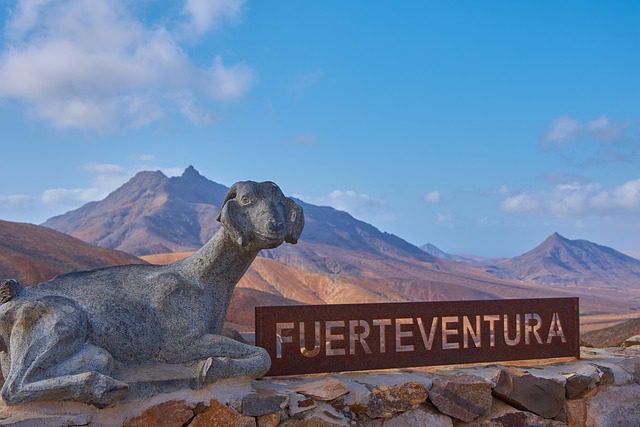
Karyo began researching where exactly on Fuerteventura we should go and eventually plumped for Tarajalejo, a small coastal town on the island’s southeast coast.
A Bargain!

It is no secret that we love a bargain, and Karyo managed to find us a corker with this one!
Via Booking.com, he found this three-bedroom bungalow. Admittedly, more bedrooms than we needed, but at the bargain lover’s price of only £1650 for a month, we were not complaining.
One of the photographs on the listing cheekily had attached a website address enabling us to contact the owner directly. When we did this he offered us a very generous £400 discount if we booked directly with him!
Of course, we agreed and ended up paying just £1250 for 31 nights.
Forty quid a night for a three-bedroom bungalow – A bargain!
Car Hire

I am always really nervous about hiring cars. I worry about getting scammed for ‘extras’ on arrival or being charged for tiny blemishes on the car on return.
However, as we had never been to Fuerteventura before and planned to explore as much of the island as possible we decided that hiring a car for this holiday would be a necessity.
The big-name hire companies were expensive. Many of the small, local companies, were much cheaper but their reviews tended not to be great.
However, two Spanish companies seemed to be getting consistently good reviews. Cicar and Autoreisen.
The consensus seemed to be that these were the two best companies. Both scored high for customer service. Cicar was said to have newer cars but often had a huge queue at the airport when collecting the car.
” I always go with Cicar, but expect to wait up to two hours when collecting your car” said one reviewer!
Armed with this information, and not being bothered about having a brand-new car, we plumped for Autoreisen, which proved to be a good decision on arrival at the airport.
The all-in price of just over £500 for 31 days was amazing value. No up-front payment was asked for, we paid in full at the airport. They happily accepted our debit card for payment, no credit card was needed, and, as mentioned in the reviews, when we arrived at the airport, we were second in the Autoreisen queue.
The queue at the Cicar stand must have had at least fifty people waiting impatiently to collect their cars before they could begin their holidays. I am often sceptical of Facebook reviews but on this occasion, they were spot on.
Tarajalejo
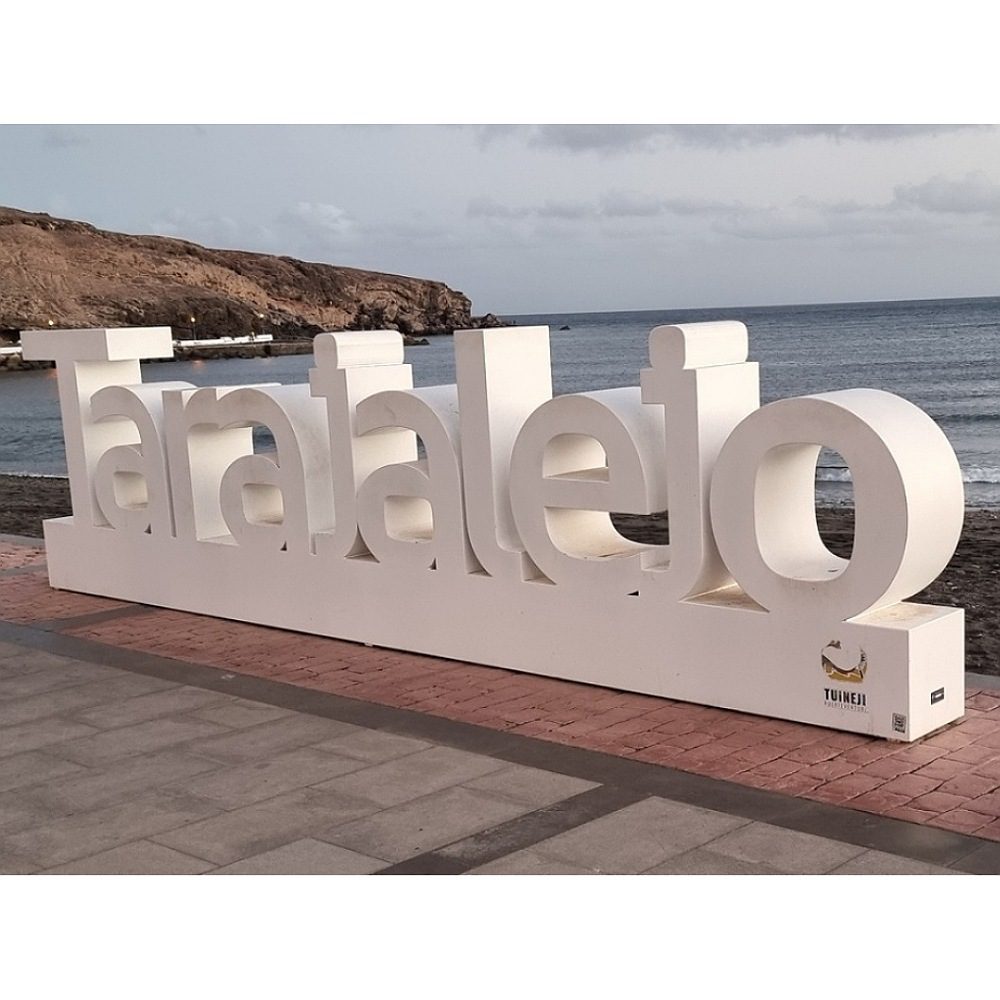
We had expected the town to be quiet but on arrival, Tarajalejo was much smaller and quieter than we had expected. I’d say a small village would be a better description.
There was a large, mostly residential area of approximately 200 homes of differing shapes and sizes. This is where our bungalow was located.
From there, a fifteen-minute stroll took you to the seafront where there was a smattering of holiday apartments, a big supermarket, a couple of small local shops, a pizza restaurant (which only opened at the weekend), and one large hotel.
…Oh, and miraculously, in this teeny-tiny town, we found a half-decent gym!
Gym with a Sea View!
We try not to let our gym-going slip as we move around from sit to sit and usually manage to find one not too far from where each new sit is located.
At first sight, we didn’t hold out too much hope of finding one here. Surprisingly though, on our first walk around the area, we could see from the street that the only hotel in town had a gym as part of its amenities.
We called in to ask if it was available for non-residents to use and thankfully it was.
It was only small but always quiet and for €60 each for a month’s membership, it had the best view ever!
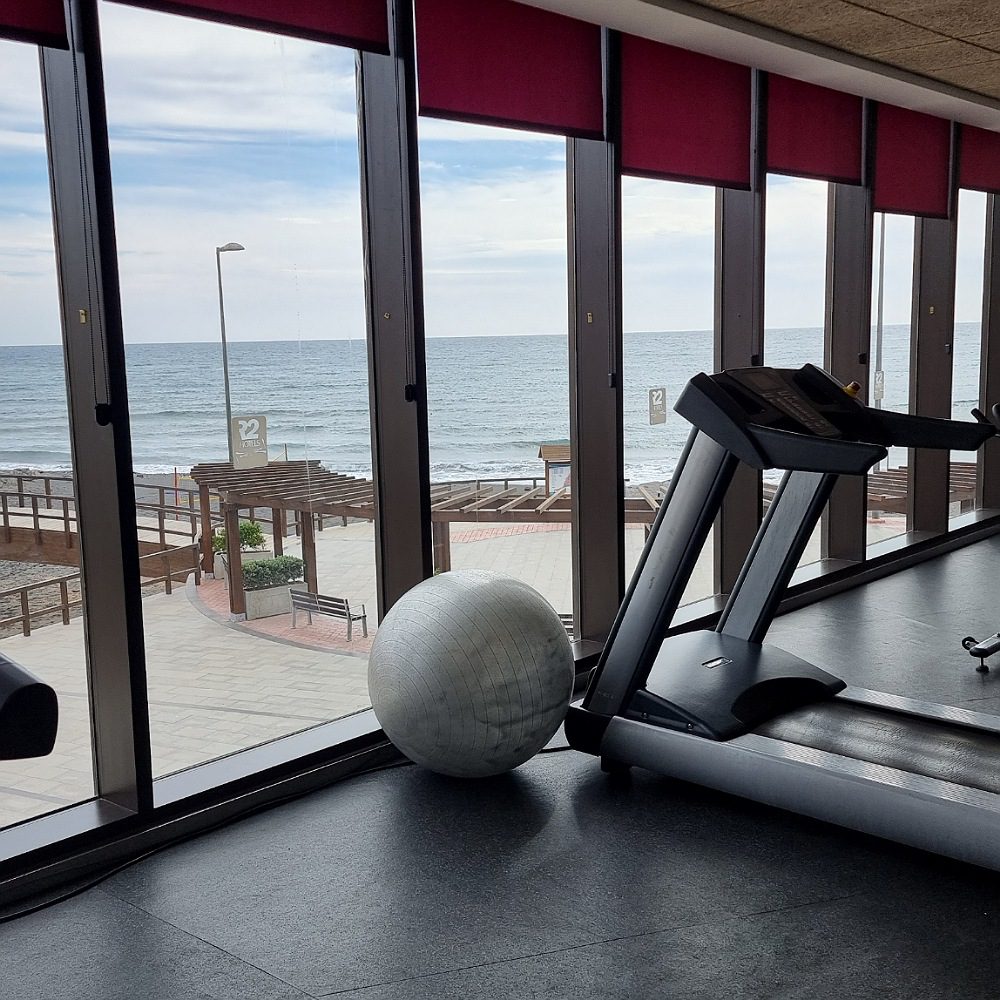
A Blot on the Landscape 😥
The only other building in Tarajalejo was a large, derelict, hotel. This was a real shame as it was in a dominant position along the seafront promenade and created a downmarket look to an otherwise pretty little town.

I asked around and the story was that the hotel had been built a few years ago but when it was on the verge of opening it transpired that there was an issue with the wrong planning consent having been obtained before any building work had started.
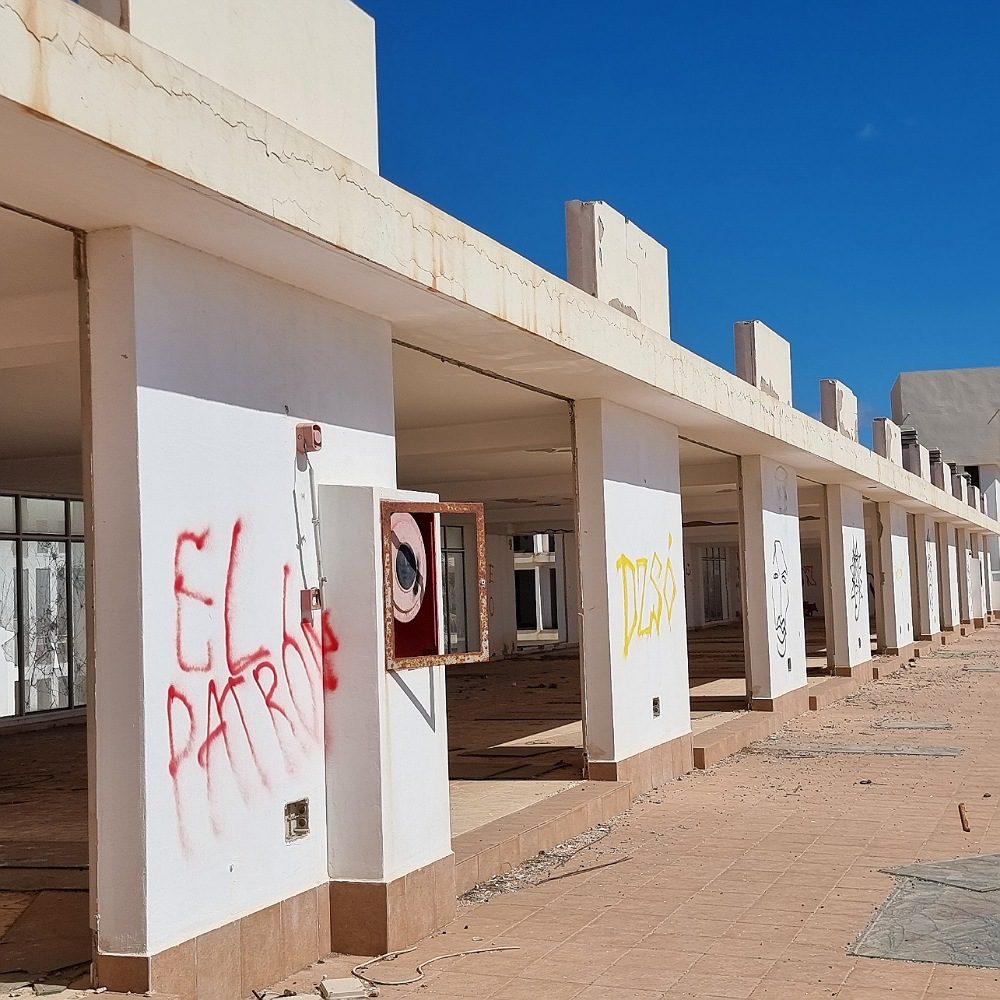

Consent had been given for a residential, not commercial building to be built on the land. The issue was never resolved and the completed, ready-to-open hotel, sadly never opened.
Over the years that followed the empty building suffered from neglect and vandalism and unfortunately now stands as an ugly blot on the landscape. Not the jewel in the crown of Tarajalejo that it was expected to become.
The Seafront
The good news was that the beach area was beautiful and came complete with a long promenade lined with ocean-themed sculptures.
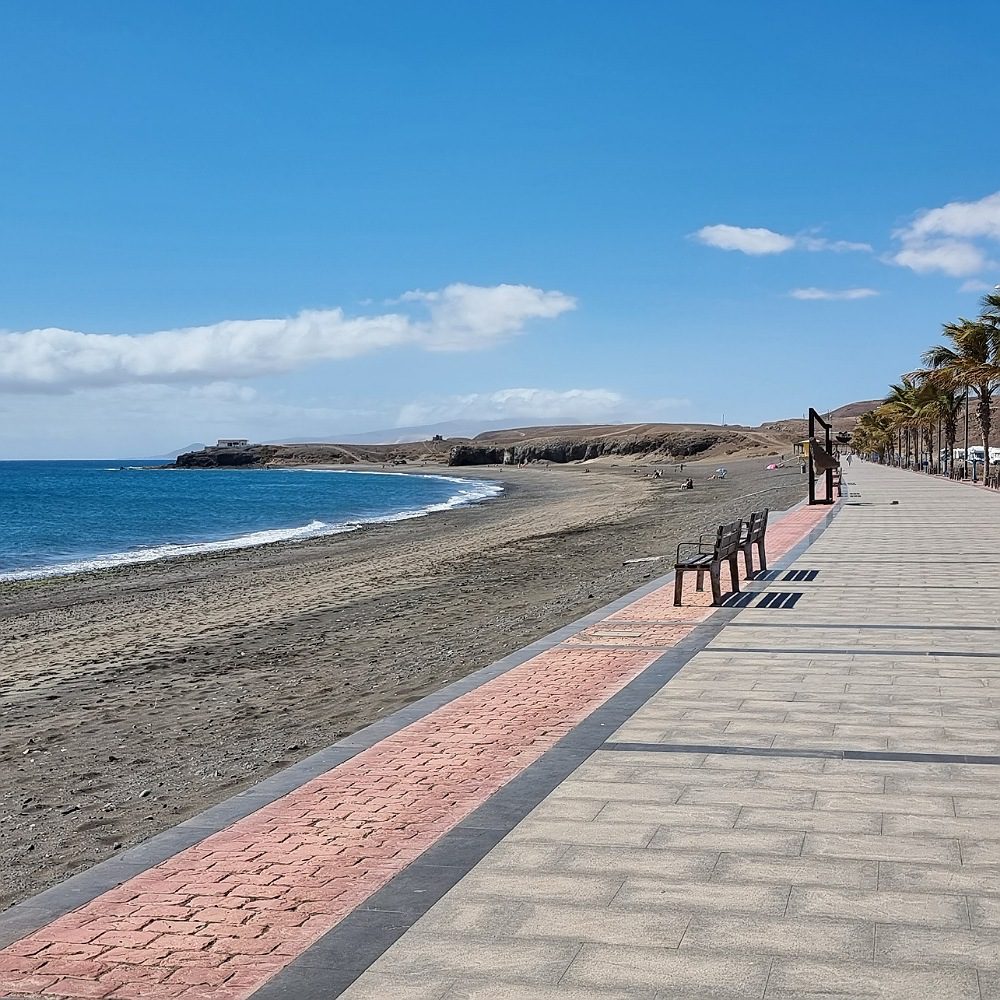
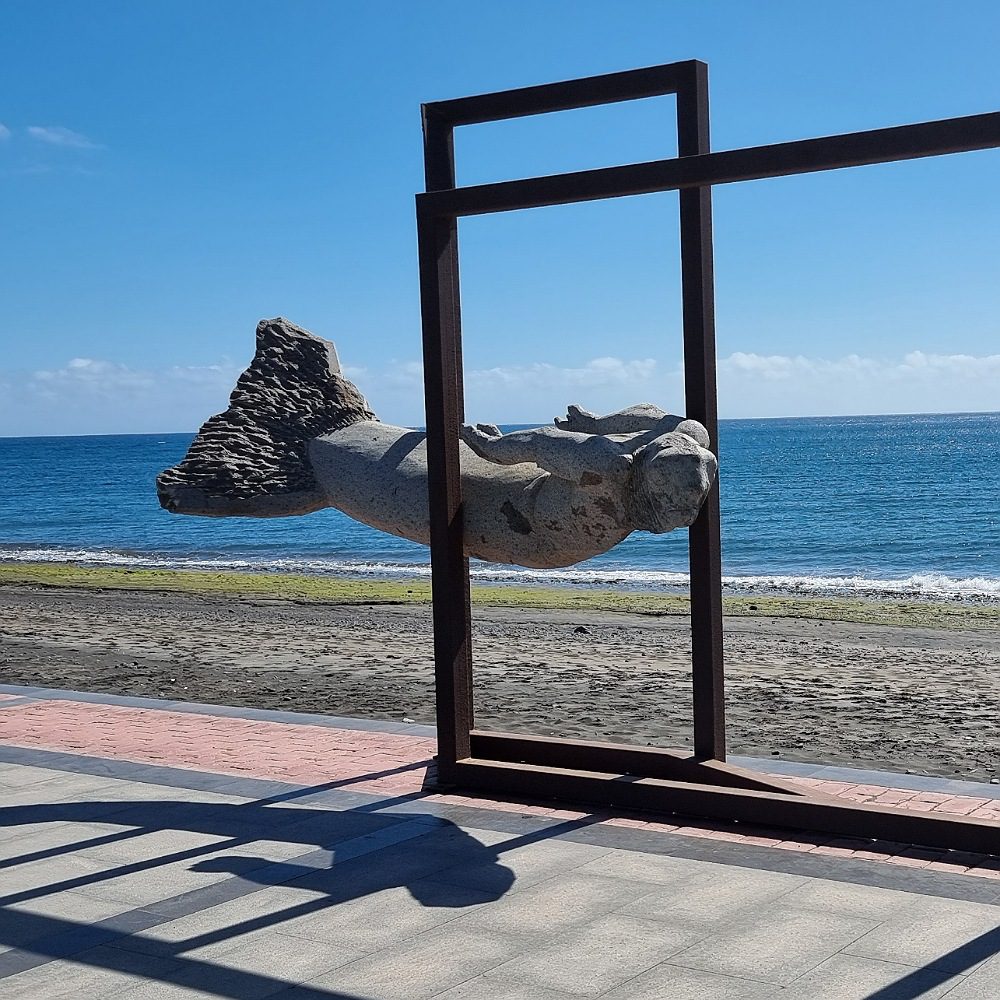
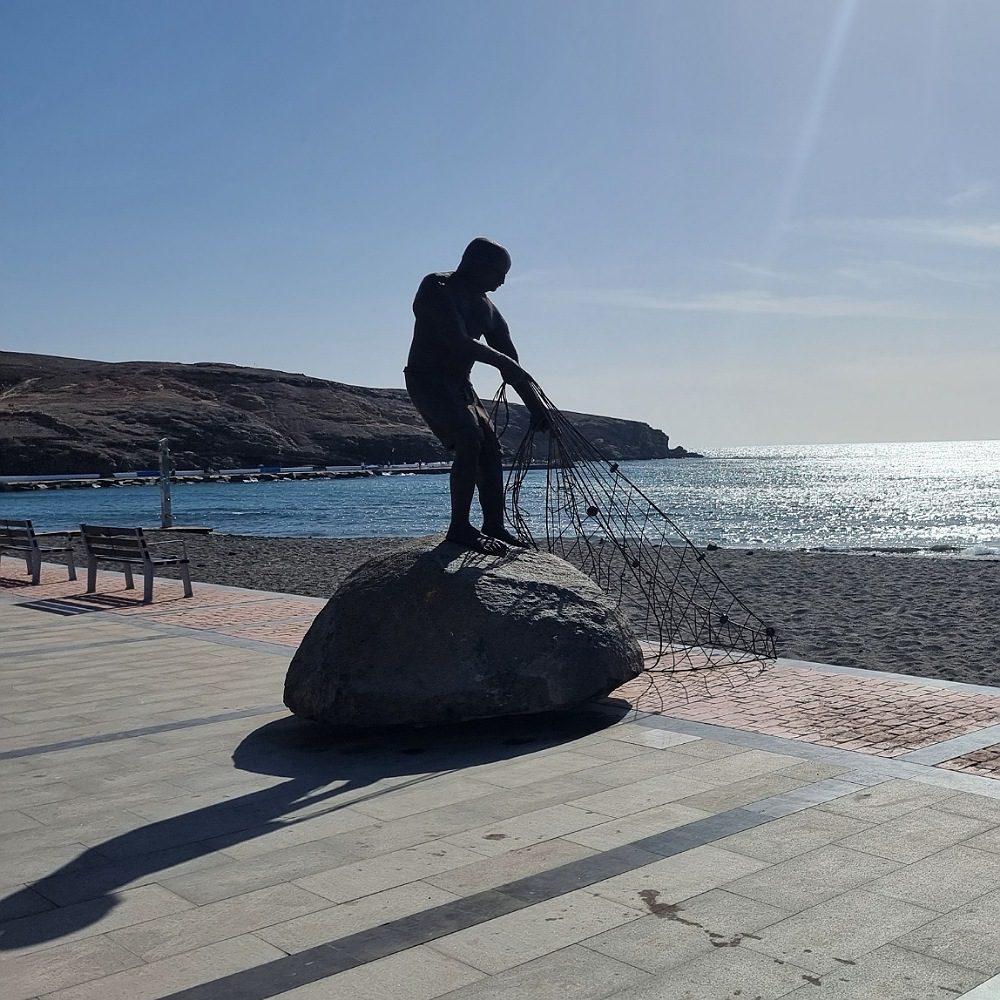
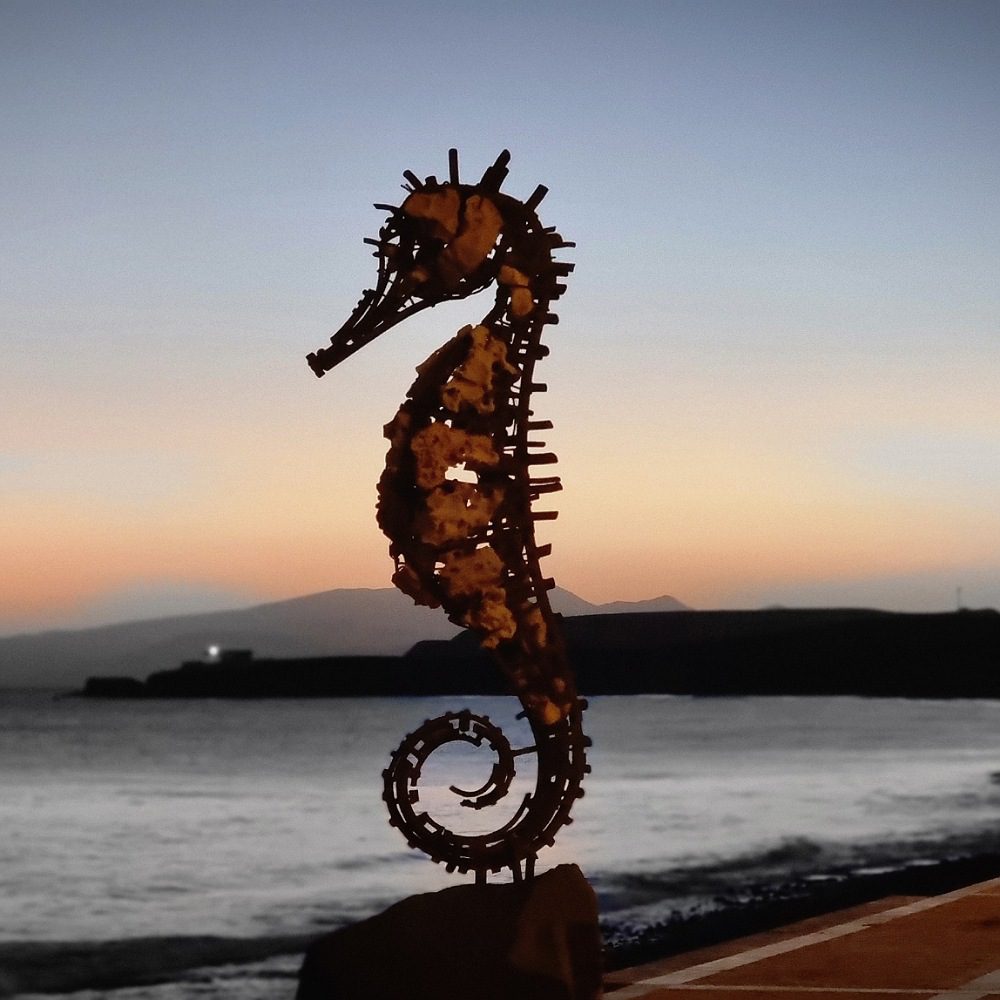
Surrounding the town were some, not particularly pretty, but lovely all the same walking paths in the mountains. These were perfect as our much-needed motivation to occasionally tear ourselves away from the beach!
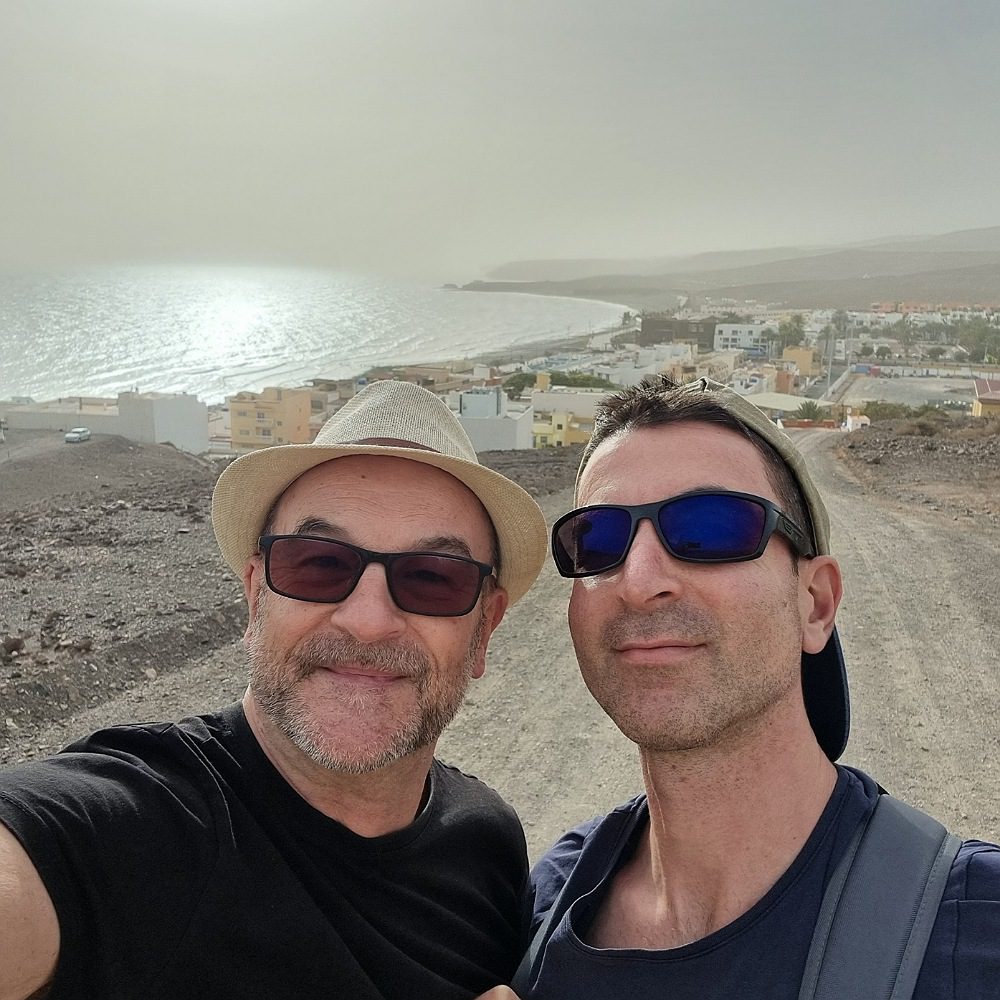

Out and About
As the town we were staying in was so quiet, hiring the car for the whole month was definitely a good decision.
The whole island of Fuerteventura is only about sixty miles in length. Hiring the car made it easy for us to explore many other towns on the island. Had we not hired the car, our chosen location of Tarajalejo would have been far too isolated for a month-long stay.
Gran Tarajal
A short drive to the north of Tarajalejo is the town of Gran Tarajal.
This is a town more frequented by locals than tourists, with Its large town centre containing general, everyday, shops you’d expect to see in a non-touristic area.
However, of more interest to us than the shopping district. This area is known for having the best, Blue-Flag-approved urban beach in Fuerteventura. The kilometre-long stretch of volcanic sand soon became one of our favourite places to spend the day.
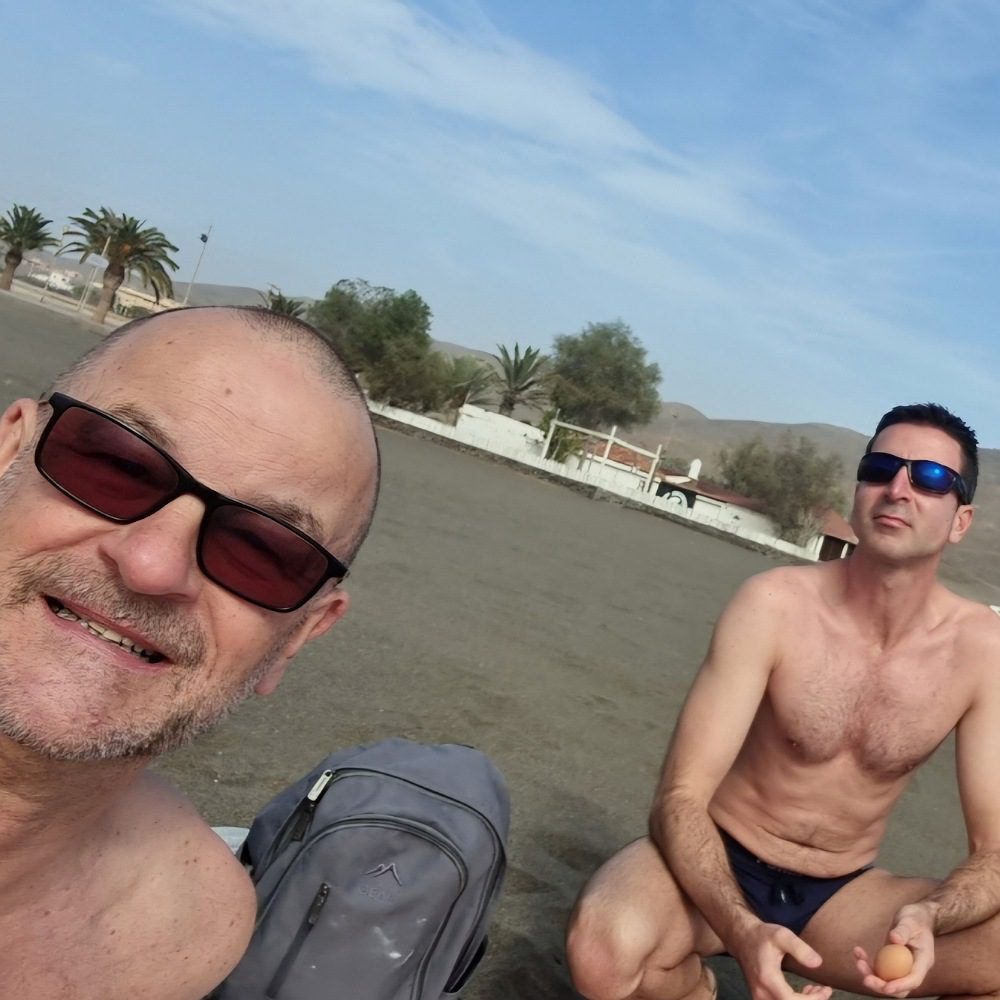
With so few tourists here, the beach only got busy at the weekend. This meant that we had the beach almost exclusively to ourselves on week days!
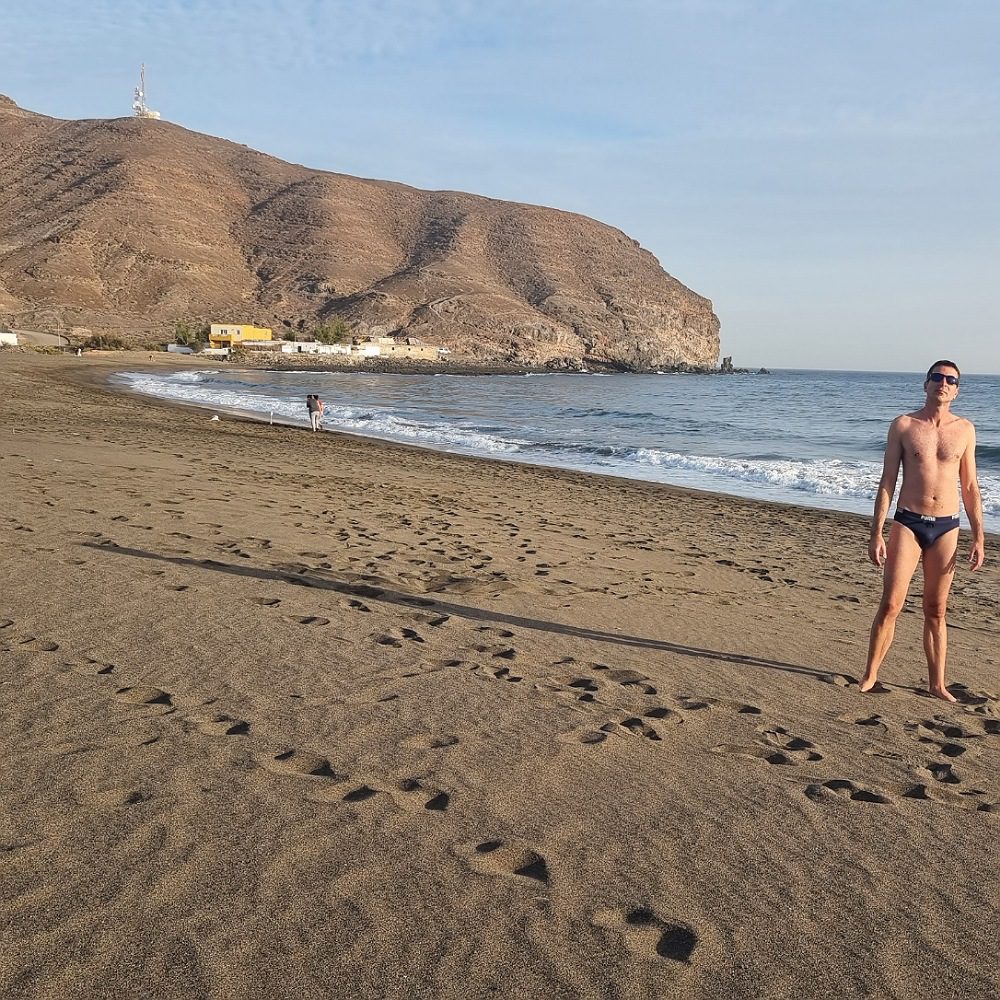
Running parallel to the beach was a row of cafes and restaurants. Great in the afternoon for people-watching and coffee.
Gran Tarajal, with its wide variety of restaurants, was also our favourite night-time destination for us to visit for dinner.
La Lajita

This was another small town just a five-minute drive south of Tarajalejo and it soon became our other preferred ‘local’ town and beach to visit.
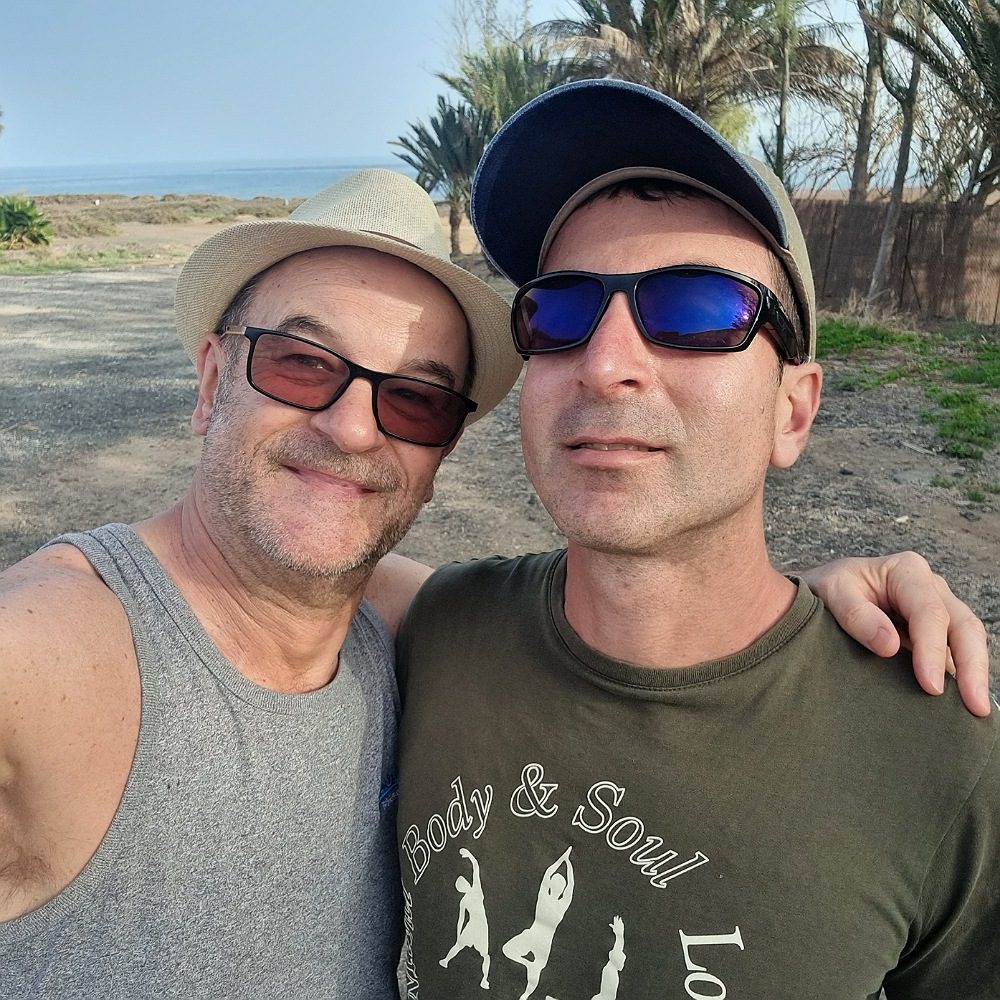

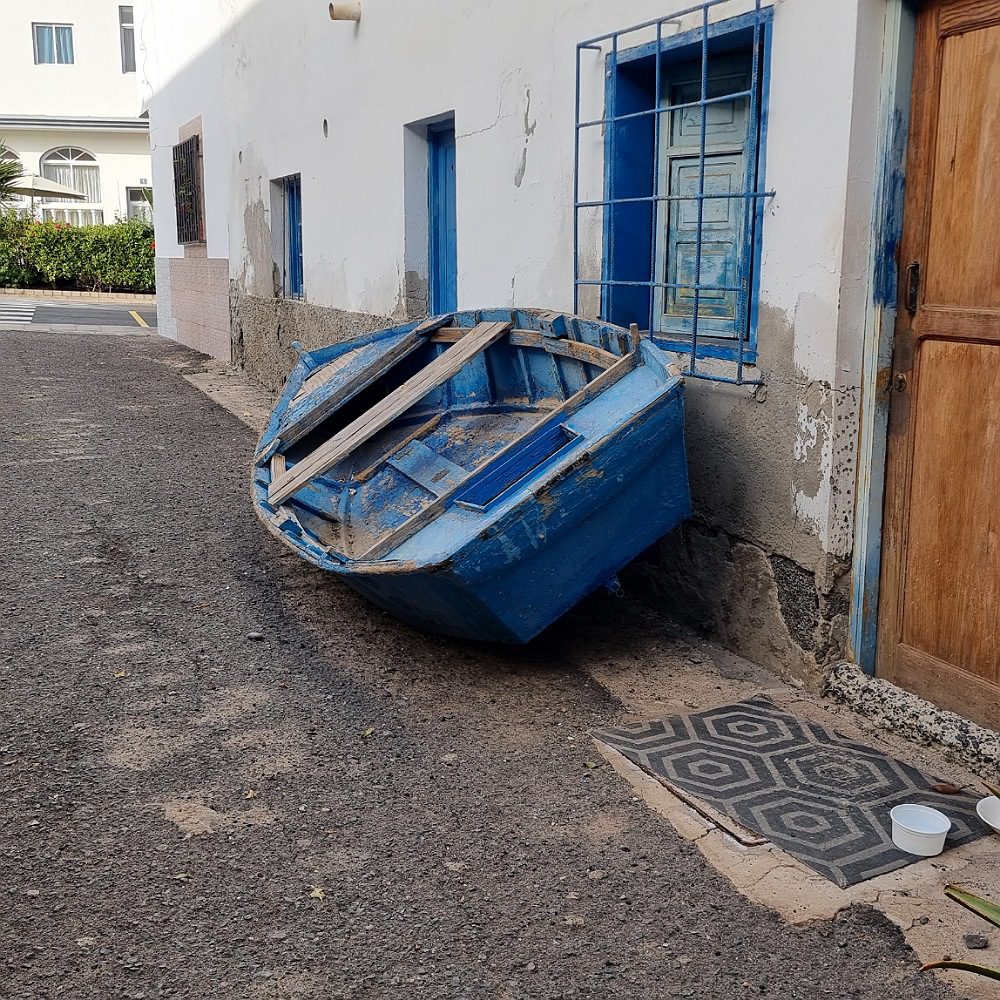
La Lajita was slightly more lively than Tarajalejo, which, let’s face it was not a difficult achievement!
The bonus La Lajita had over Tarajalejo was as well as a lovely quiet beach, it also had a small town centre made up of a handful of shops, a church and a couple of bars, cafes and restaurants.
Not what you would call a metropolis by any stretch of the imagination, but nice to visit after a hard day on the beach 😎

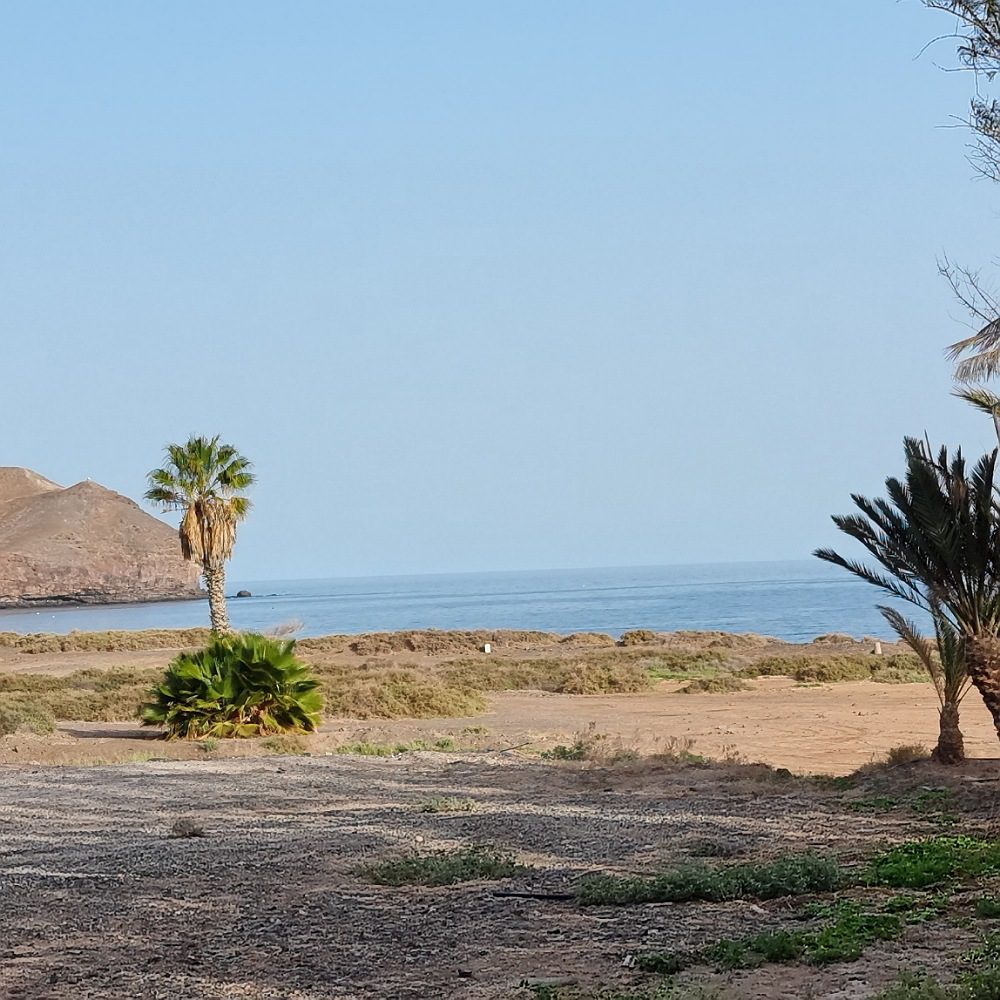
Costa Calma
South of La Lajita is Costa Calma beach – famous for its two kilometres of white sand and beautiful turquoise sea.
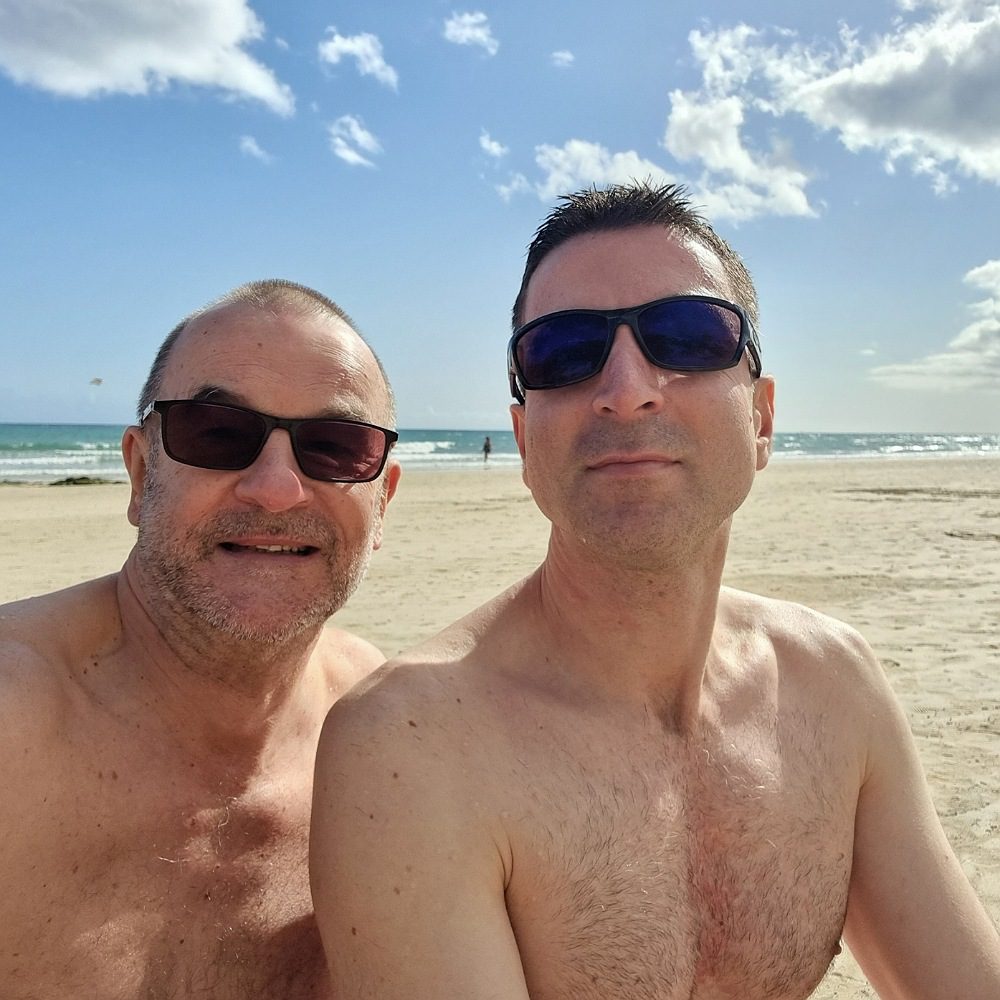
As its name suggests, Costa Calma does not have strong waves making it probably our favourite beach on the island. We visited here a few times during our stay.
Morro Jable
Driving further south still, took us to the town of Morro Jable. This seemed to be the most touristy town in the south of Fuerteventura.
It consisted of a long stretch of road. One side was lined with shops, cafes, bars etc. Behind these were many hotels accommodating the tourists who had chosen to stay in the quieter, southern region of the island for their holidays.

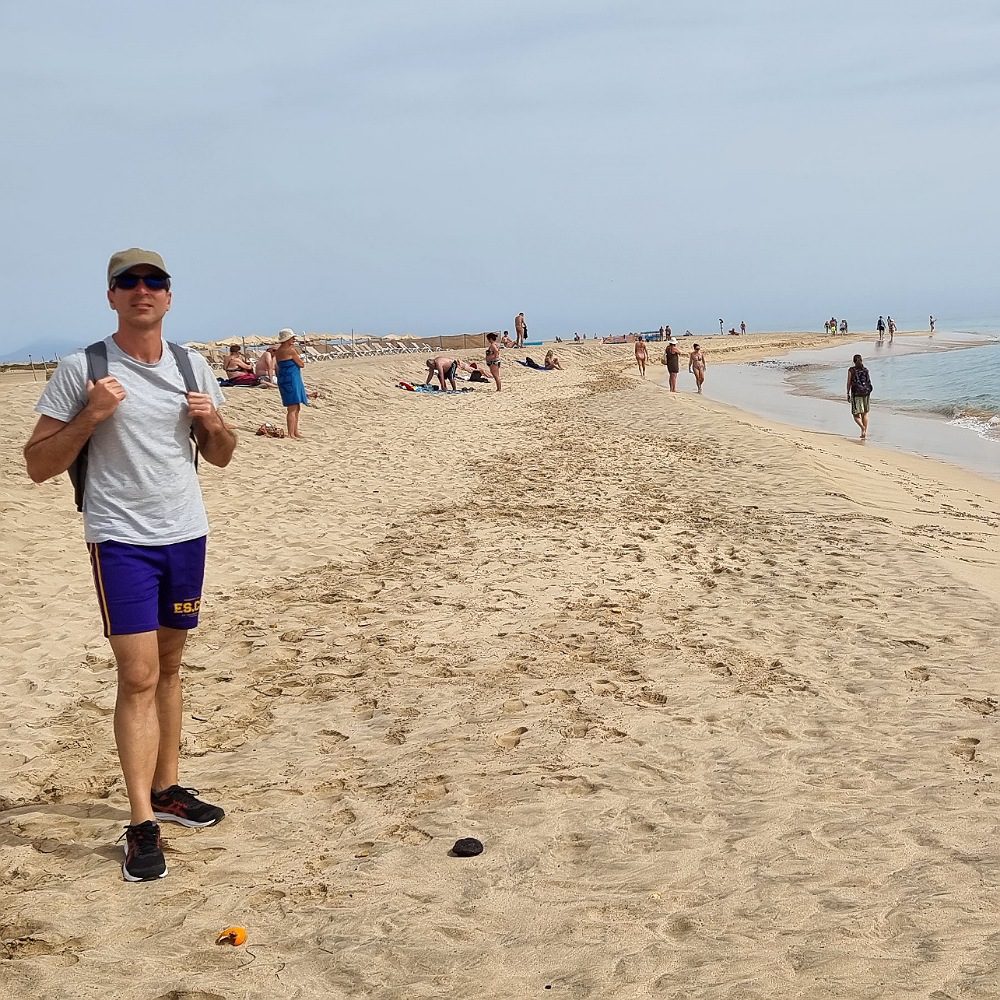
On the other side of the road was a stretch of golden, sandy beach that ran as far as the eye could see.
It did not matter that this town was so popular with tourists as the beach here was easily big enough to accommodate everyone, with space to spare!


A novelty for this area was how many squirrels there were in the grassland areas next to the beach.
Beach squirrels! – Who knew?
The squirrels are, in fact, Barbary Ground Squirrels and are not indigenous to Fuerteventura. They were introduced to the island in 1965 from Africa. Quickly adapting to the climate and terrain they can now be found all over the island in their thousands.
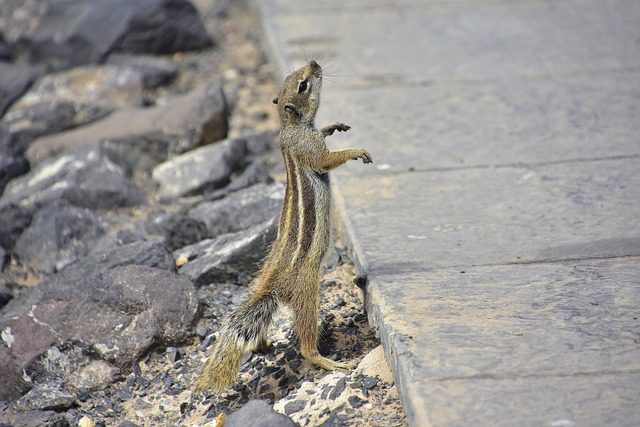
Their population has increased so much that they have destroyed much of the natural habitat. They may look, and act cute to tourists but in reality, are vermin.
Think rats with bushy tails!
La Parad
On the rugged, wild, windy, west coast of Fuerteventura, we visited the town of La Pared.
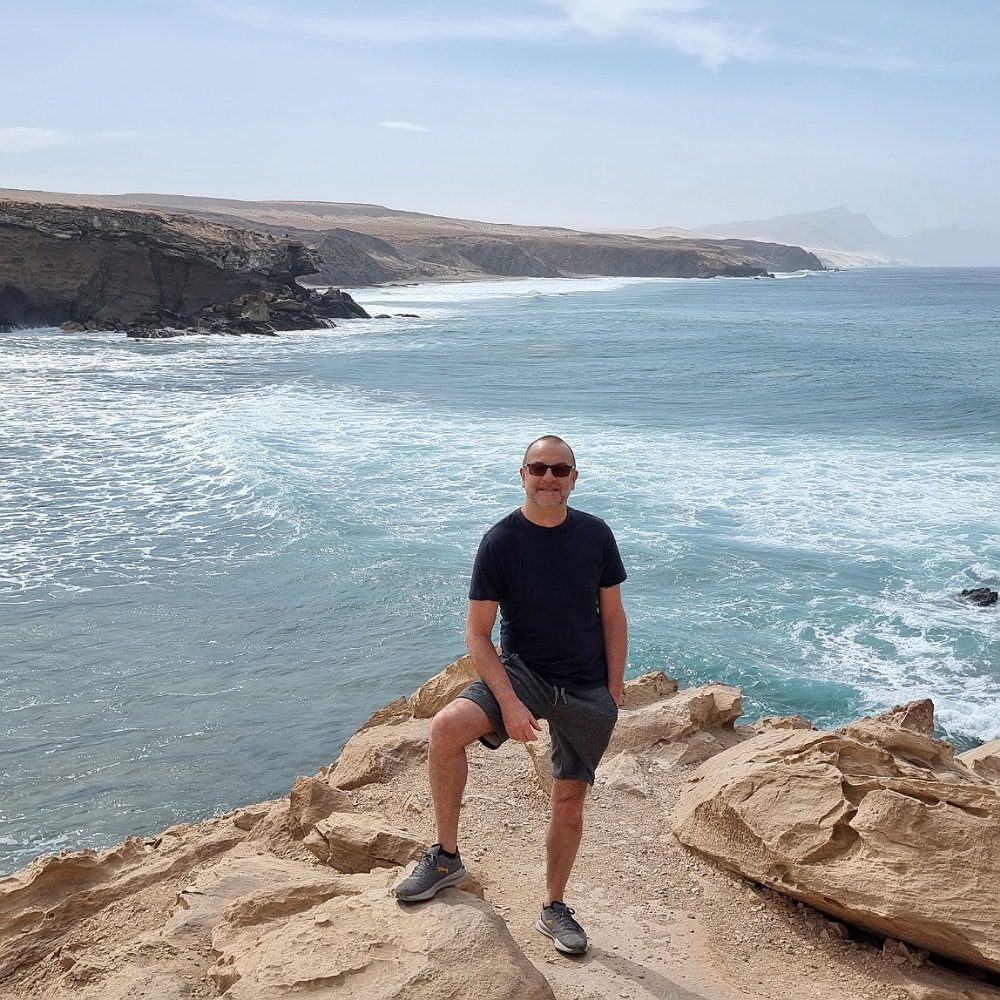
There were once plans to create a large holiday resort here, aiming primarily for lovers of adrenaline-boosting water sports. Unfortunately, that never happened and now there is very little here, except for the breathtaking beauty of nature!
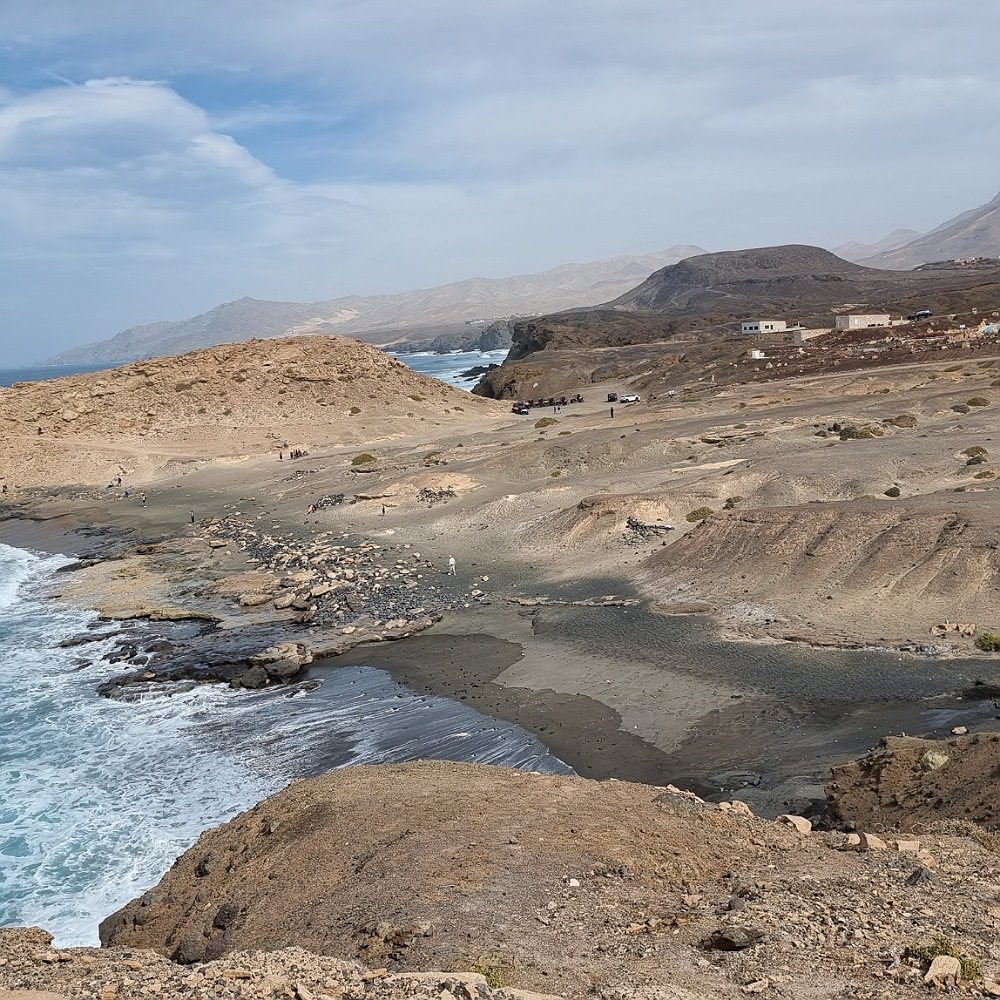
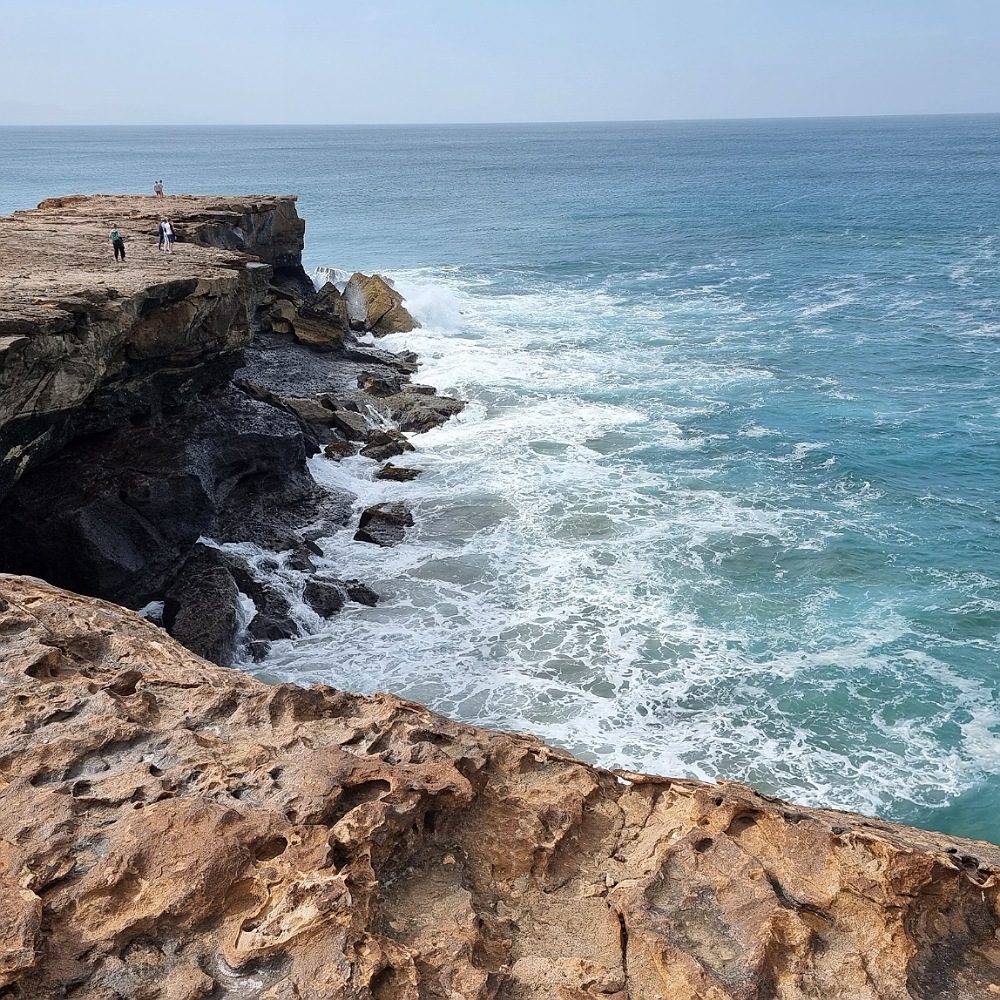
The village has one small hotel, a handful of tourist-type accommodations, a small supermarket, and one combined restaurant & bar.

It is a shame the regeneration never happened as I am sure the wild waters, sandy beaches, amazing views, and fantastic sunsets would have easily attracted tourists en masse. Giving this area the tourist boost it needed to compete with other towns and villages on the east coast.

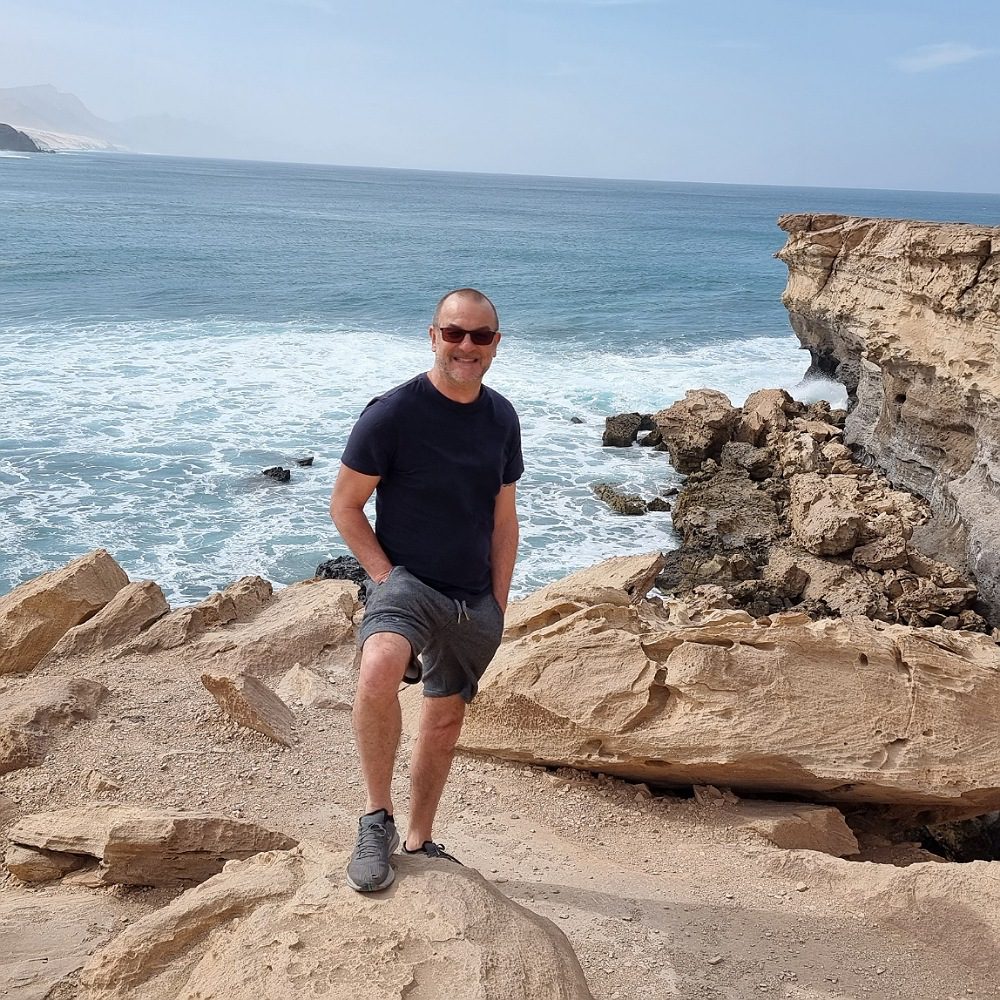
Maybe the area is just a little too wild and rugged.
La Pared is still a great place to visit though, it is mostly untouched by humans and provides a perfect environment for surfers. For those brave enough to want to learn to surf these waters, there are several surf schools in the area.
However, with strong winds, huge waves and dangerous underwater currents La Parad is not a water sports destination for the faint-hearted!
Pajara
After visiting La Pared, we drove inland heading towards Betancuria. On the way, we came across the pretty town of Pajara.
Pajara is the second oldest town on the island (after Betancuria). It is a town with notably more locals than tourists wandering the streets. This gave it a far more authentic, Canarian, vibe.
A beautifully preserved original, water wheel was a focal point in the town square. During fiestas and other special occasions, you can see the water wheel working, drawn by a local donkey as it would have been hundreds of years ago.

Next to the water wheel is the Church, Iglesia de Nuestra Señora de Regla, built between 1687 and 1712. It has an interesting Mexican-style stone facade, showing the sun, moon, snakes and large wild cats.
This facade is completely different from the usual baroque design of most churches on the island. It is believed that a well-travelled local influenced the unusual carvings.
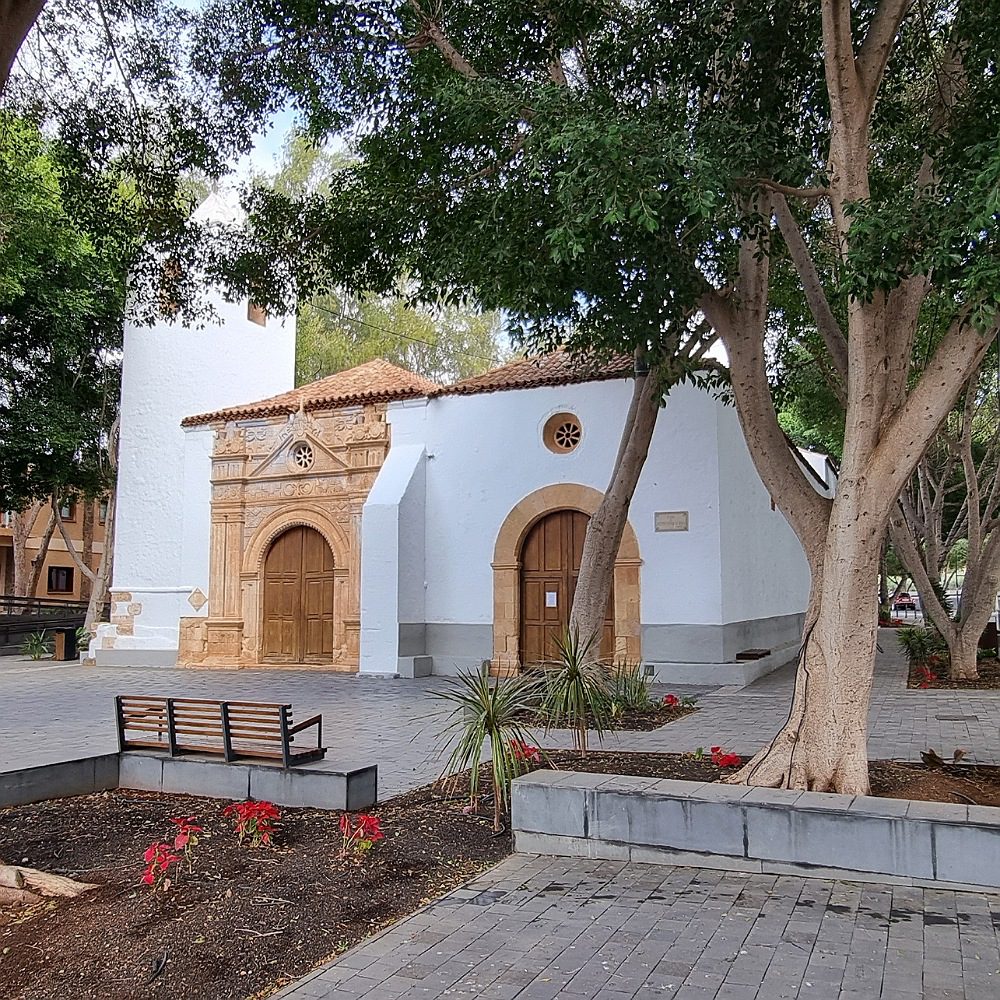
Whilst walking around the town, we randomly stumbled across a 22 mtr high, crocheted Christmas tree!
We don’t know why it was there but with all the effort put into creating it, It was quite a spectacle and definitely deserves a mention.
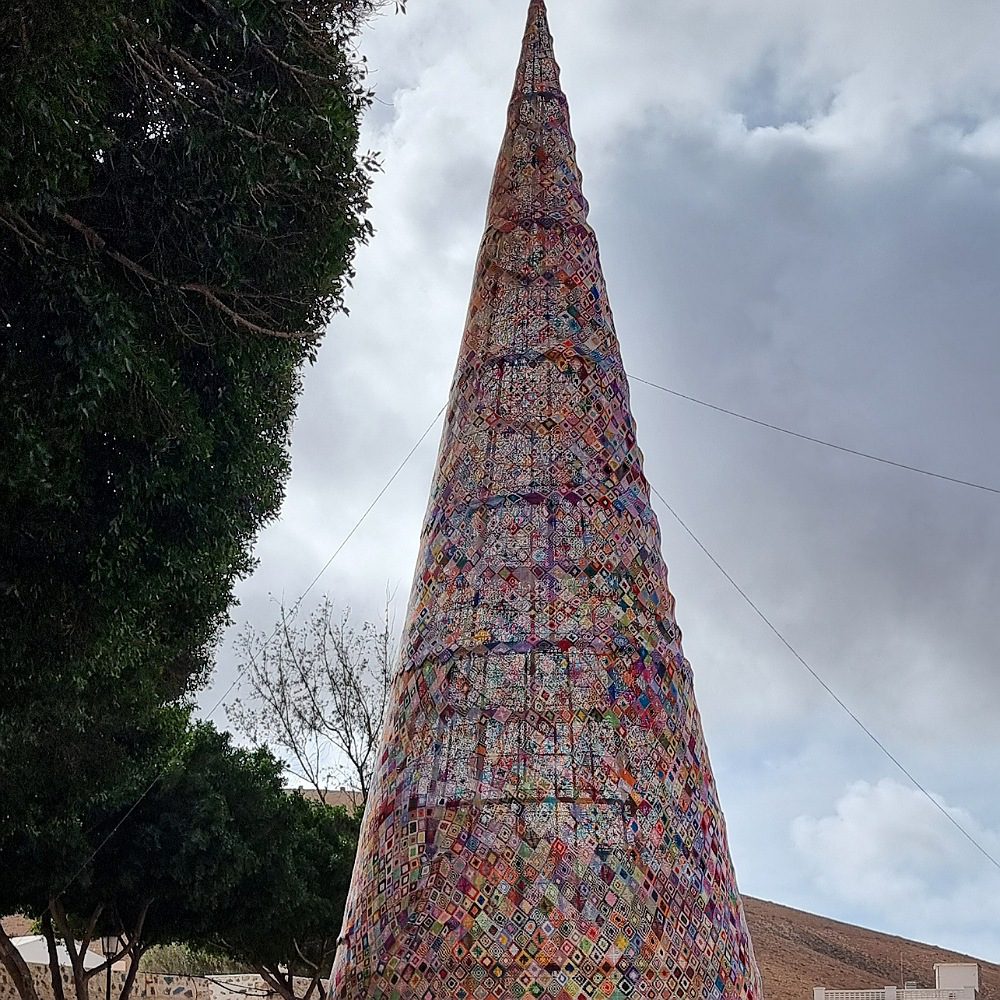

I have no idea whether it is on display all year round or was waiting to be dismantled and stored away until Christmas 2024. It was an impressive piece of craft work to see in any case 😀
Also in Pajara, are several bars and cafes making it a popular place for tourists exploring the island to take a much-needed break and leg-stretch stop.
Betancuria
Betancuria is the oldest town in Fuerteventura. With only 800 permanent residents, it is also said to be the least densely populated.
Having said that, As probably one of the most visited places on the island, don’t expect it to be quiet! The streets are always full of tourists, many coming on coach tours. parking in this small town is a nightmare!
Betancuria is named after the conqueror Juan de Bethencourt, who founded it in 1404. This was the original capital city of Feurtuventura and remained so until 1834 when Puerto del Rosario became the island’s new capital city
The Santa María de Betancuria church-cathedral has stood in this town since 1410.
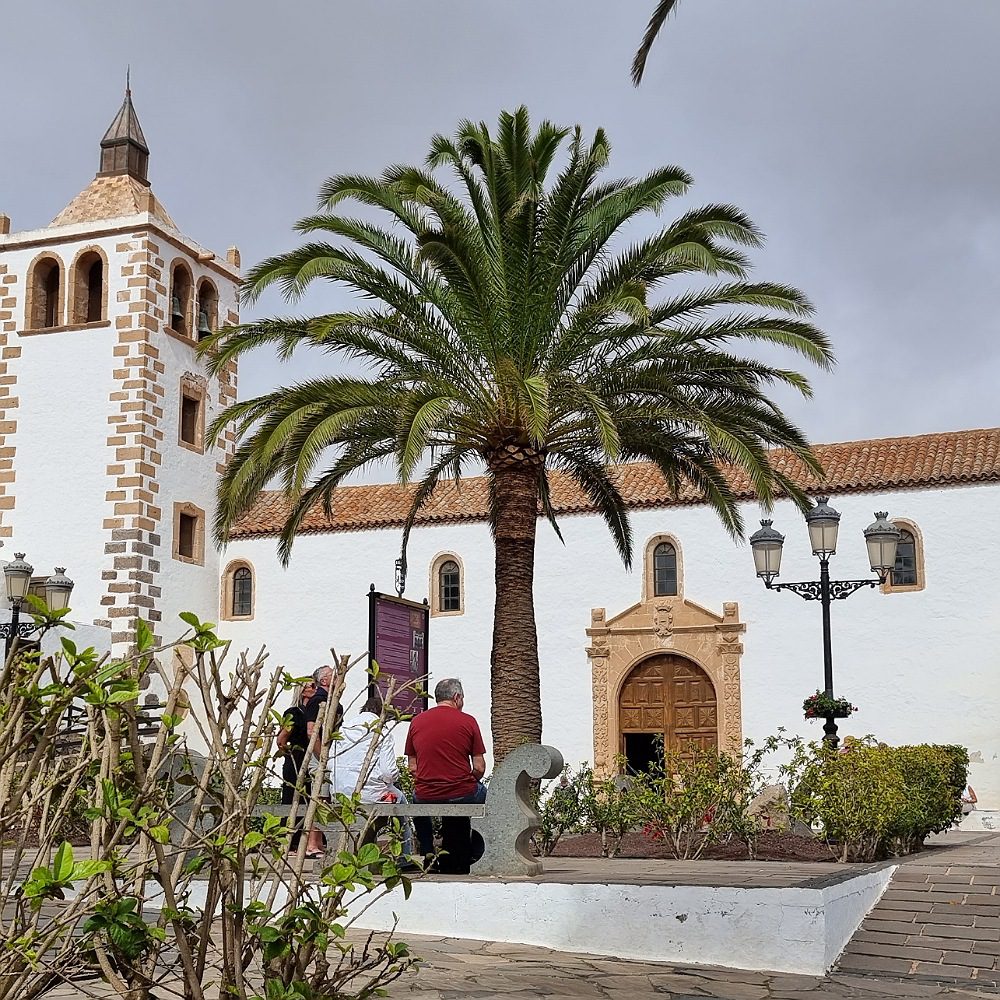

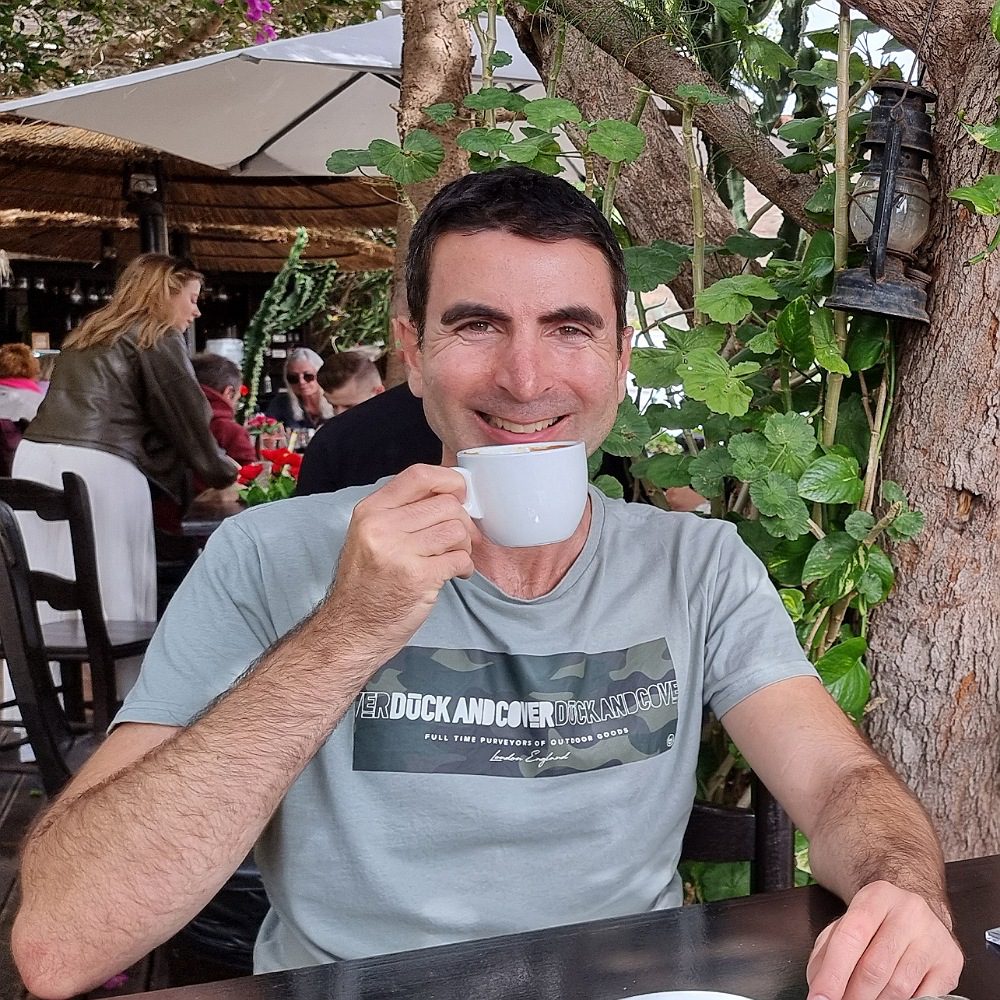
Yes, the town is full of history and rich heritage. Yes, it is beautiful, quaint, and charming. Yes, It is spotlessly clean, and Yes, it is a highly recommended must-do place to visit whilst in Fuerteventura.
However, we did feel that Betancuria was a victim of its success. The popularity of this historic, beautiful, quaint, charming village as a tourist attraction has unfortunately stripped it of all its authenticity.
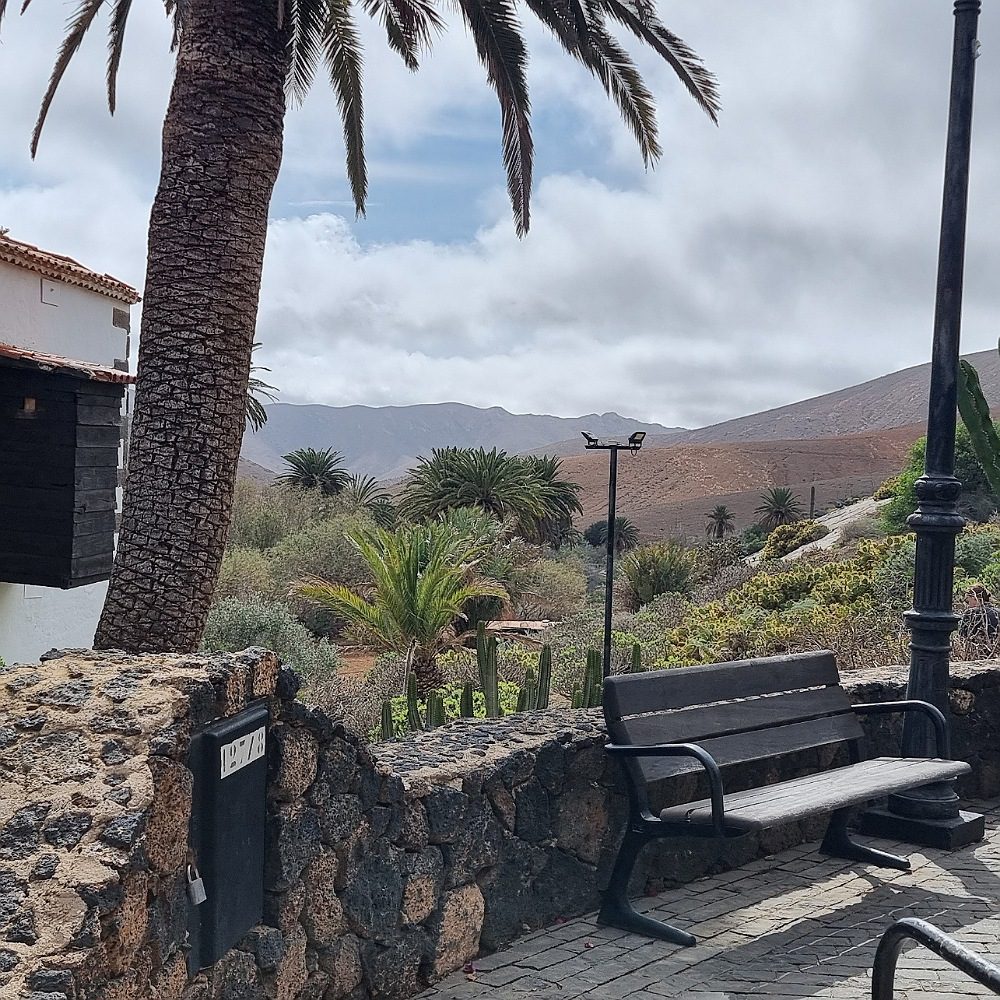
Maybe it was us, maybe it was just too perfect, but literally everything here seemed to be there for only the tourists. It had the ‘Disney’ feeling and we felt we were walking around a specially made gigantic film set.
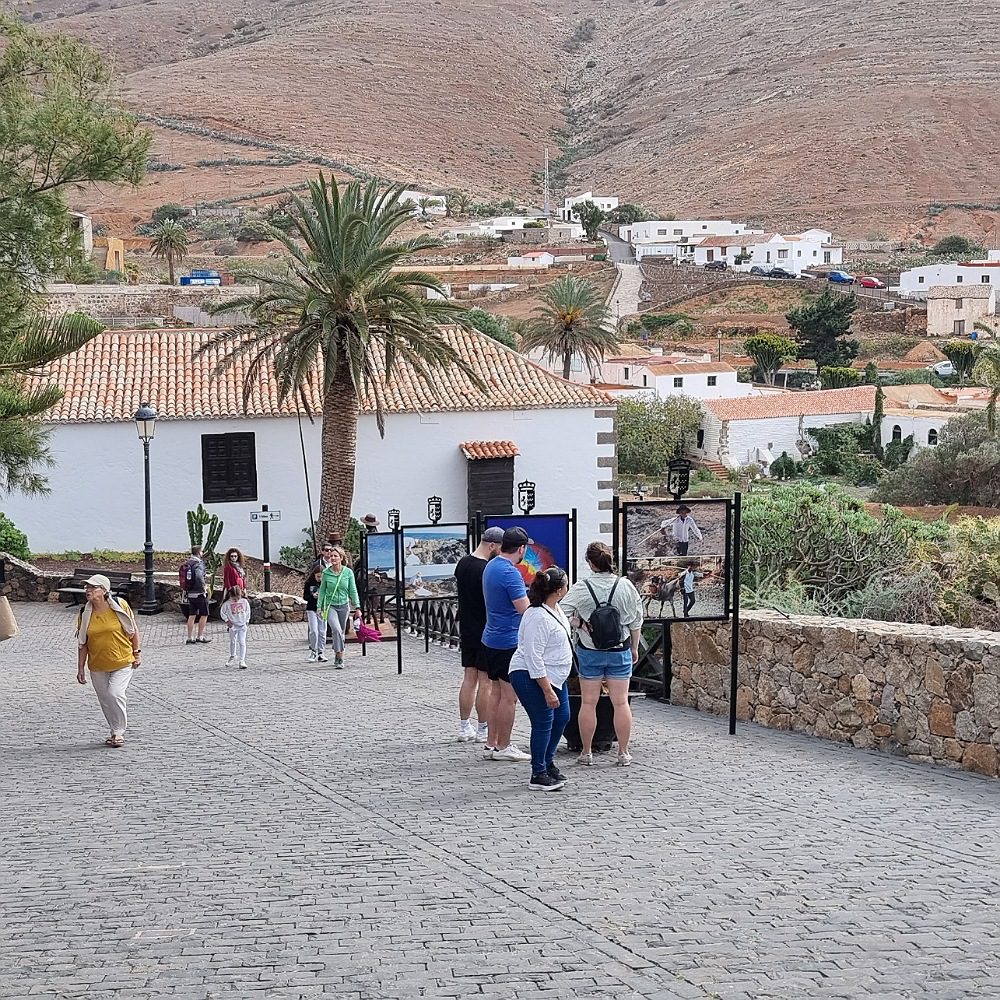
Puerto del Rosario
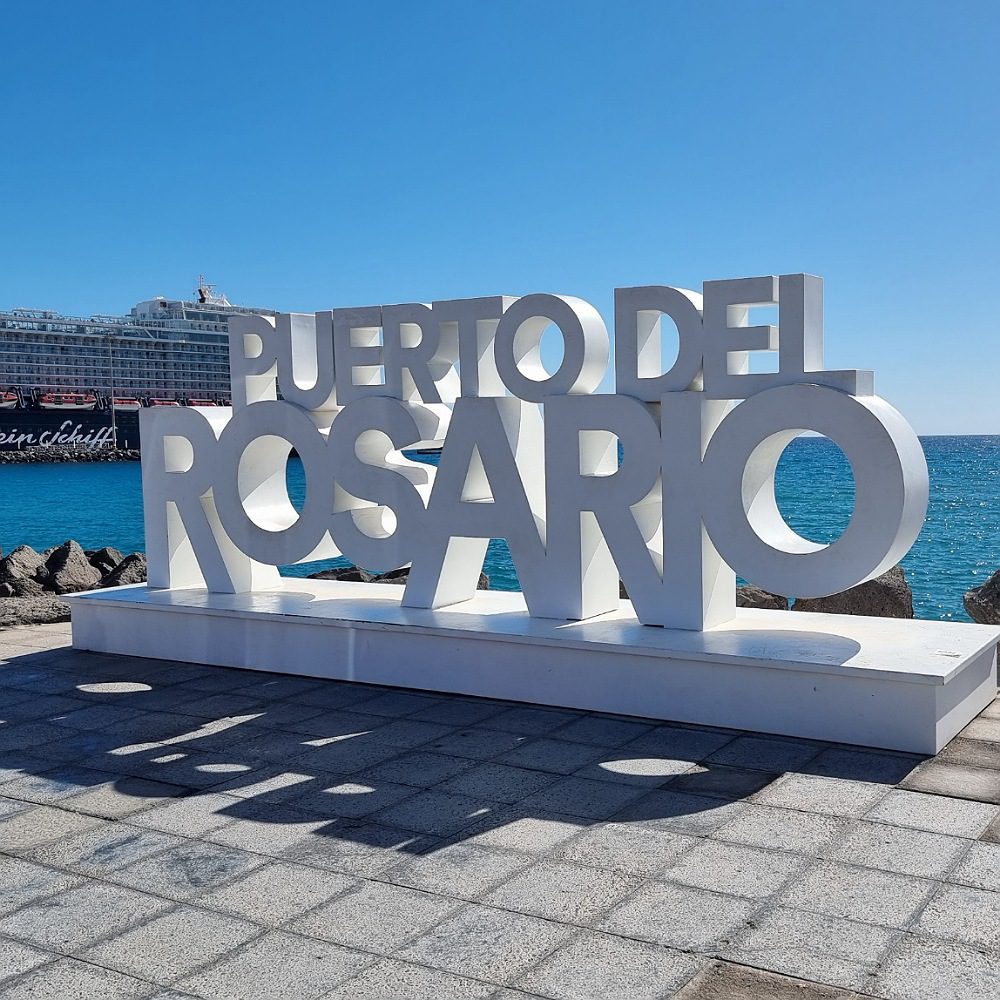
The capital and largest populated city of Fuerteventura is Puerto del Rosario.
Puerto del Rosario means Port of the Rosary and the main church in the centre is dedicated to the Patron Saint, the Virgin del Rosario.
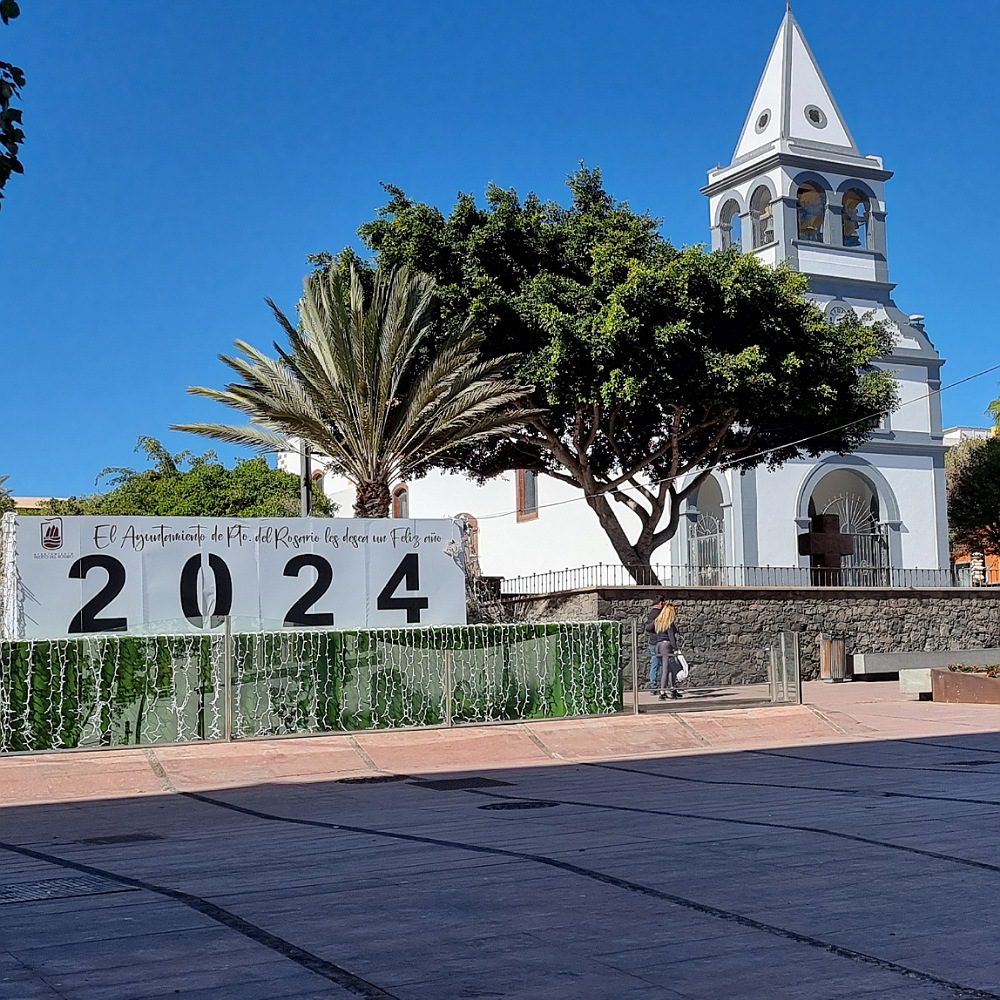
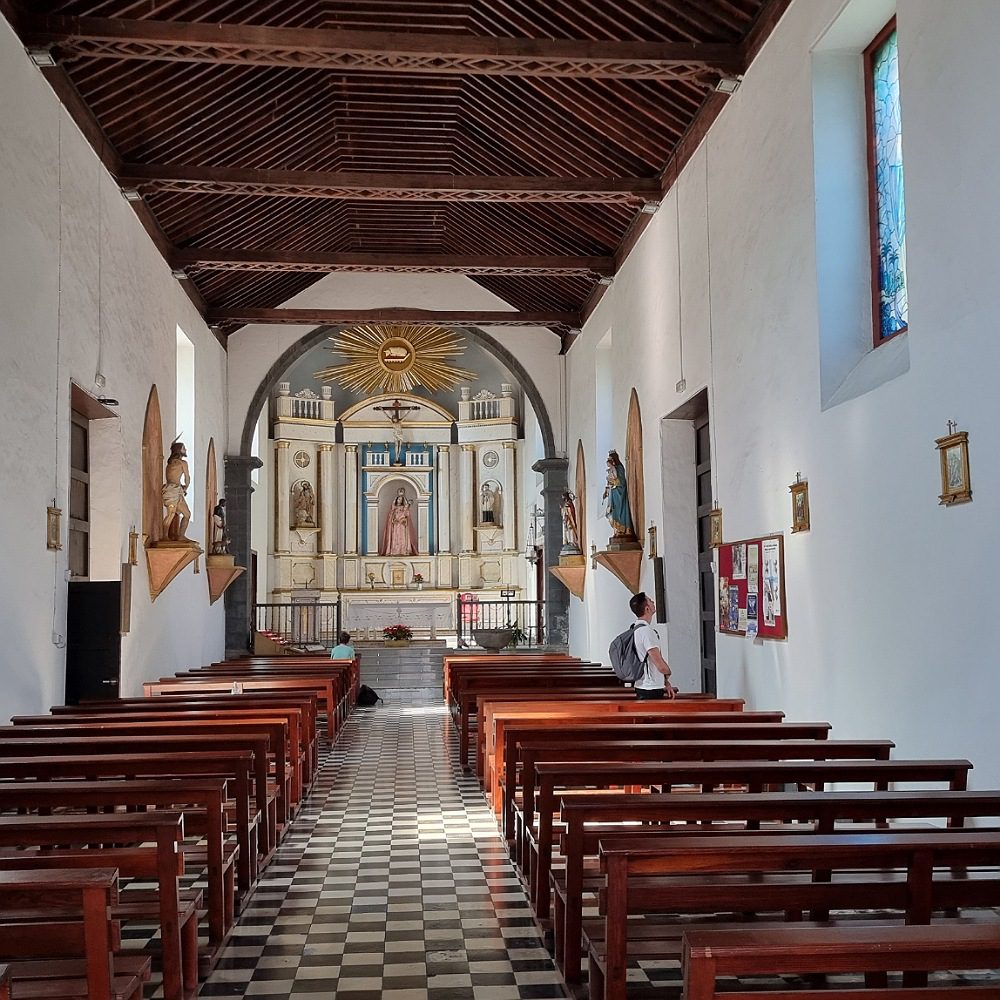
It is a working city with a population of around 50,000 and although not a typical tourist town is often buzzing with tourists. This is because Puerto del Rosario is the main port of Fuerteventura. Cruise ships regularly dock here, bringing thousands of tourists for short-stop visits to Fuerteventura as part of their floating itinerary.
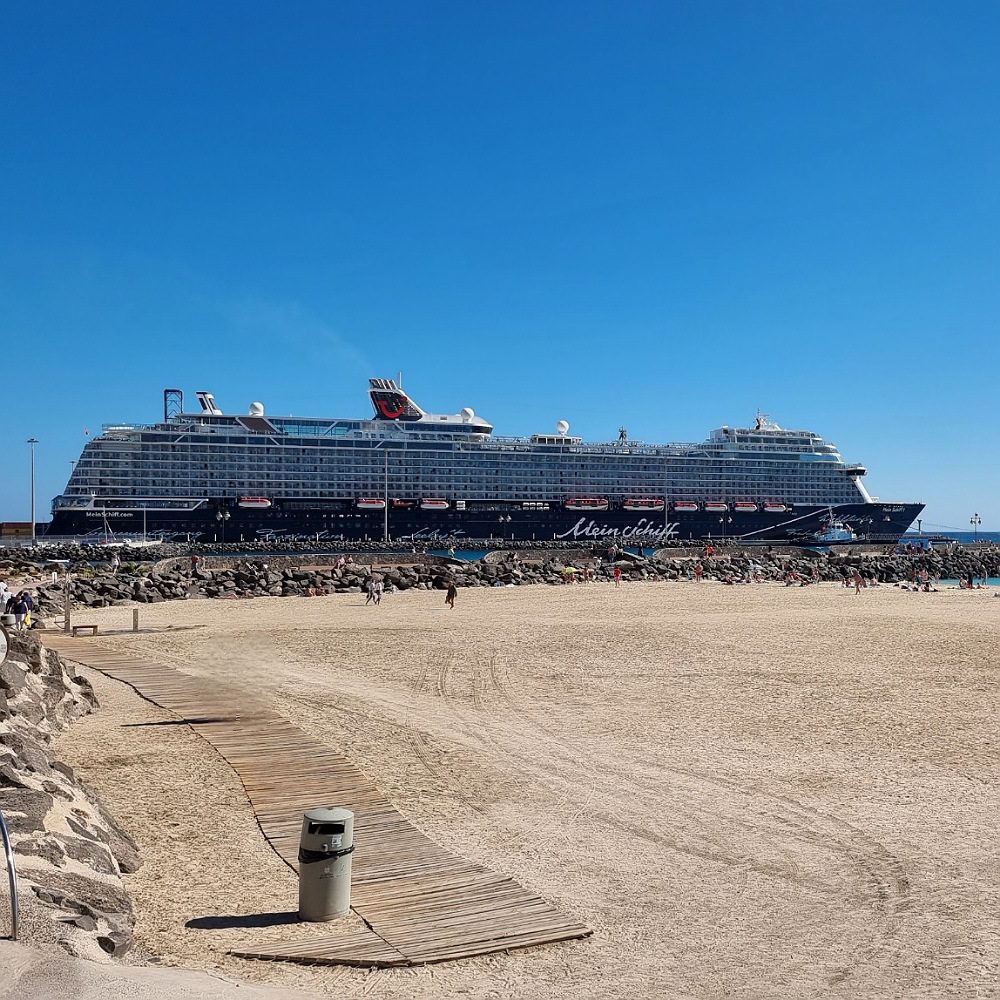
Inter-island ferries are also continually arriving here. Bringing with them tourists from the other Canary Islands, eager to add Fuerteventura to their list of Canary Islands visited.
The harbour is the oldest part of Puerto del Rosario and has narrow streets lined with typical Canarian-style buildings.
There are two popular town beaches.

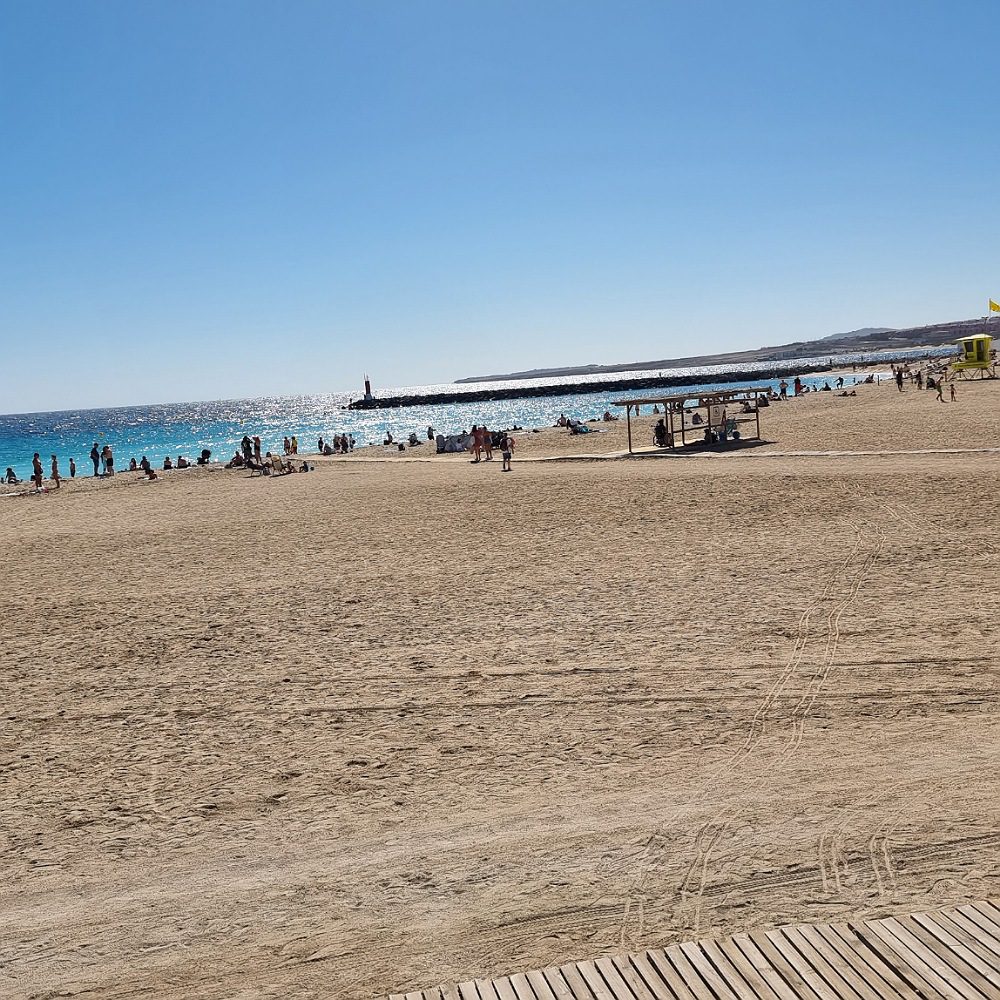
Playa Chica, with its long promenade, is a pleasant sandy beach with wooden walkways for easy wheelchair and pushchair access.
A short distance to the south is Playa Blanca, another sandy beach with a beach bar, showers, toilets and a lifeguard on duty at peak times.
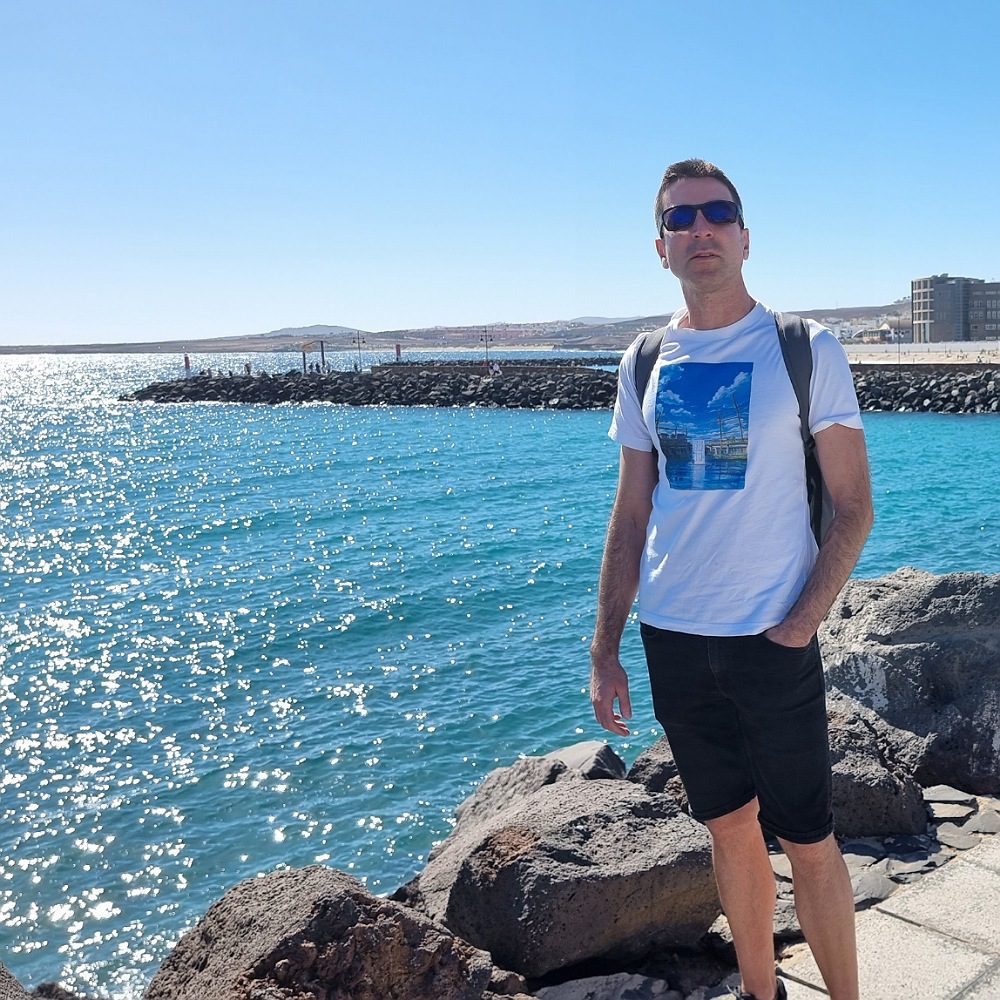
As expected, for this day-trippers paradise. The choice of shopping and eating possibilities is seemingly endless!
Fun Fact – Puerto del Rosario used to be called Puerto de Cabras, or Port of Goats, after the herds of goats that lived on the island. The name was changed in 1956 as islanders feared it was making them a laughing stock. Although, there are still many residents who want to see Puerto del Rosario revert to its original name.
Corralejo
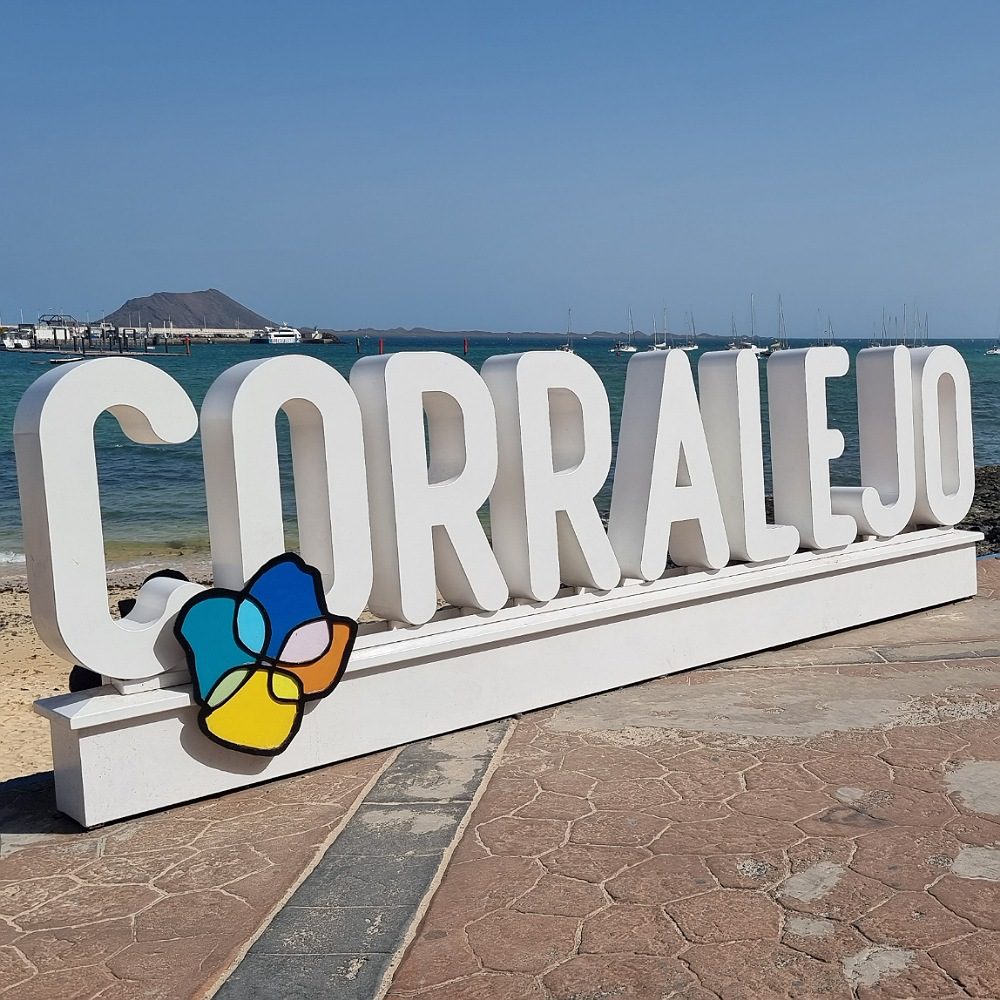
After Puerto del Rosario, we travelled north to the very popular seaside resort of Corralejo.
The marina area here had opportunities for fishing, all manner of water sports, glass-bottom boat excursions, and day trips to Isla de Lobos, a small island just north of Corralejo.
Regular ferries were taking the thirty-minute trip to Playa Blanca on the neighbouring island of Lanzarote.
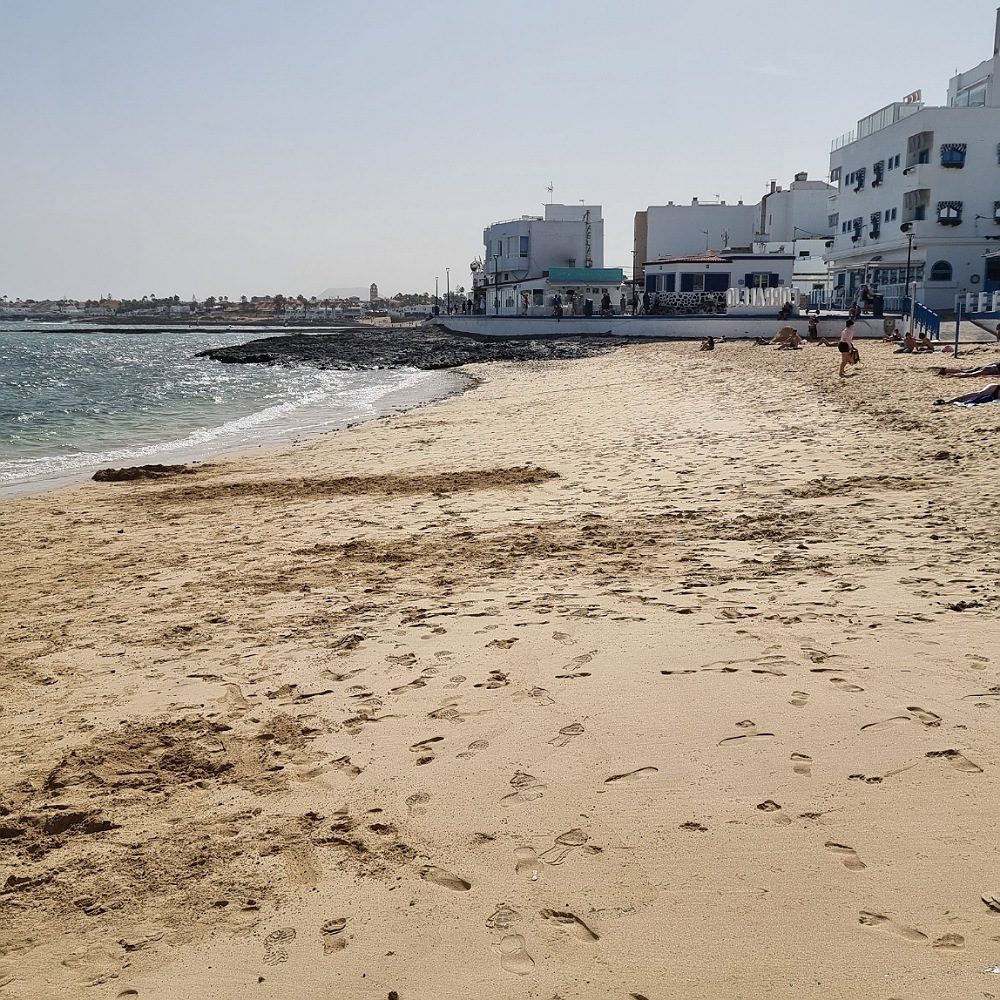

Corralejo’s traditional, old town is mainly around the port area. From there, the main shopping street runs towards the outskirts of town.
This street is huge, busy, and brim full of tourists. The whole area, for us, gave the impression of what we imagined Benidorm to be like. Although admittedly, having never been to Benidorm, this could be a wildly unfair assumption!
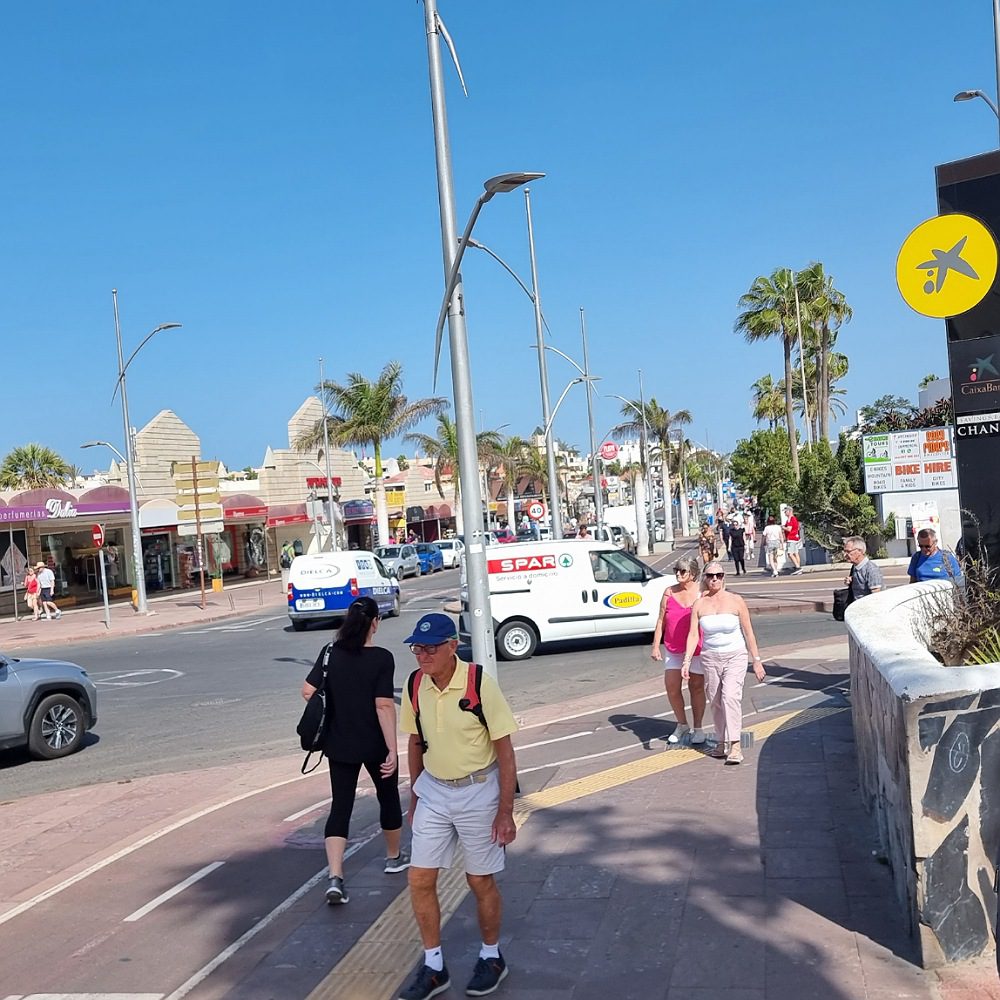
It had many shops selling everything from tat to high-end fashion. More cafes, bars, loud music, and night-time establishments to keep you entertained for a lifetime but next to no charm or authenticity!
Corralejo is the largest resort in Fuerteventura. There is no denying that it is a lively and popular holiday destination. The beach, with its calm waters, is great for families with children and the many entertainment establishments offering cheap beer deals are a magnet for younger holidaymakers.
For us though, We enjoyed our day visit but were happy to have chosen somewhere not quite as lively to call home for our month-long holiday on this lovely island
Let’s face it, there are only so many two-euro pints of beer you can drink whilst singing ‘Viva Espana’ out of tune, at the top of your voice, before the novelty starts to wear thin!
Time to go!
We really enjoyed our month in Fuerteventura. It made a pleasant change from our usual Canarian trip to the island of Gran Canaria. We saw many of the island’s varied towns and would recommend a visit here to anyone. We hope to return sometime in the future.
For now though, in what seemed like the blink of an eye, we were packing again. Relaxed, refreshed and raring to get to our next house and pet sit .
Next Stop, Horley, a stone’s throw from Gatwick Airport.
More on that next time. Until then, as always, thanks for reading.
Hugs, Colin & Karyo x
![]()
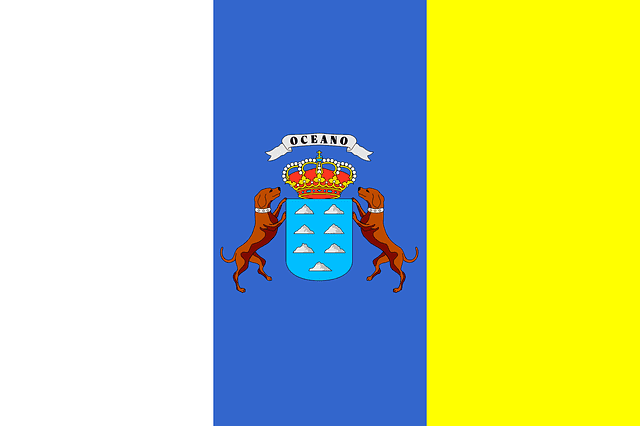
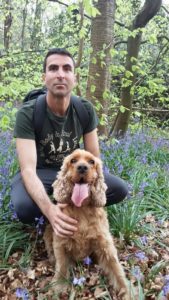


I don’t usually comment but wanted to say, I always love reading your blogs, glad you both had a well deserved break.
Thanks Hayley x